Looking for essential small business marketing ideas that can be modified to fit any budget?
There are many ways to grow your business’s success—from keyword research to user-generated content—and you don’t necessarily need a large budget.
Below, we’ve provided 35 actionable marketing ideas for small business owners to help you get more traffic, leads, and customers.
SEO Marketing Ideas for Small Businesses
SEO helps make your business easier to find when your target market searches for solutions online.
How?
By increasing your business’s visibility on search engine results pages (SERPs). This way, more people see the listing and click through to your website.
Use the following small business marketing ideas to optimize your site for SEO and improve your online presence.
1. Optimize Your Site for SEO
Optimizing your website for SEO and user experience helps it rank higher in search results.
While SEO involves many components, you can start by creating an SEO Project and conducting a free Site Audit using Semrush.
Click “Create Project” and add your site’s URL.
Once you’ve done that, you will see domain analytics for your site, including an authority score, organic traffic, and referring domains.
Next, you can set up various Semrush tools to audit and improve your rankings, like Position Tracking, Site Audit, On Page SEO Tracker, and Backlink Analytics.
Additional steps you can take to optimize your site for SEO include the following tasks:
2. Research SEO Keywords
Keywords are the search terms people use to find online information—including your business. Use keyword research to identify the terms people use when searching for products, services, or content like yours.
Well-conducted keyword research helps you:
- Better understand your target audience and market
- Customize your content to the needs and wants of your audience
- Generate more organic traffic to your website
There are three general stages to keyword research:
- Finding relevant keywords for your business using a keyword research tool
- Prioritizing keywords using the metrics and criteria you learn through research
- Creating an SEO strategy to optimize your site for the keywords
To get started, use the Semrush Keyword Magic Tool to generate keyword ideas based on your business’s products or services. You can conduct up to 10 searches per day for free.
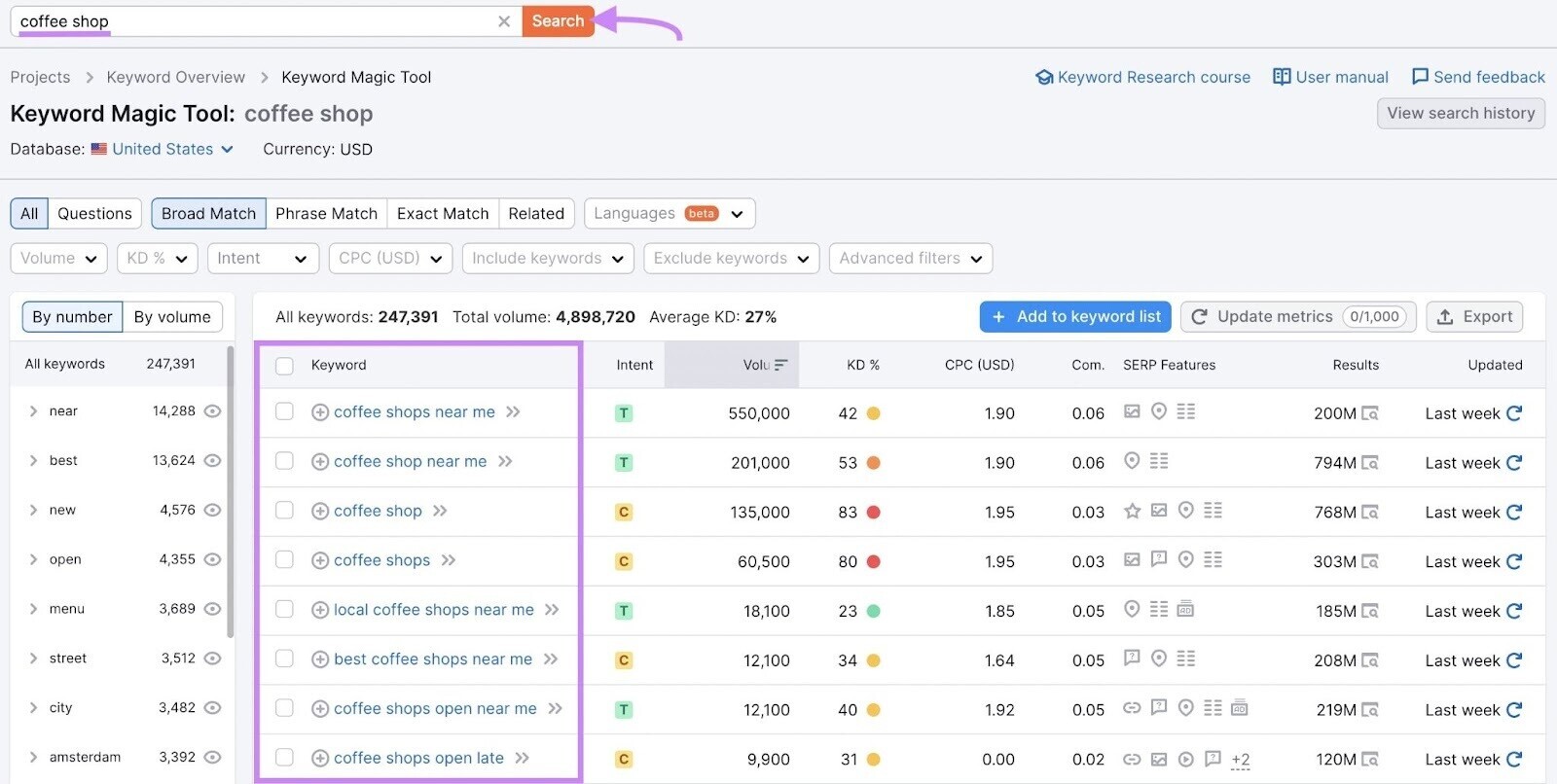
3. Improve Local SEO
Your small business can benefit from local SEO if it has a physical presence or serves a geographic area.
How?
Local SEO improves your ranking on local search results and gets your business in front of people in your community.
Even better? It’s a low-cost strategy that can pay off in a big way for any business that relies on local customers and foot traffic.
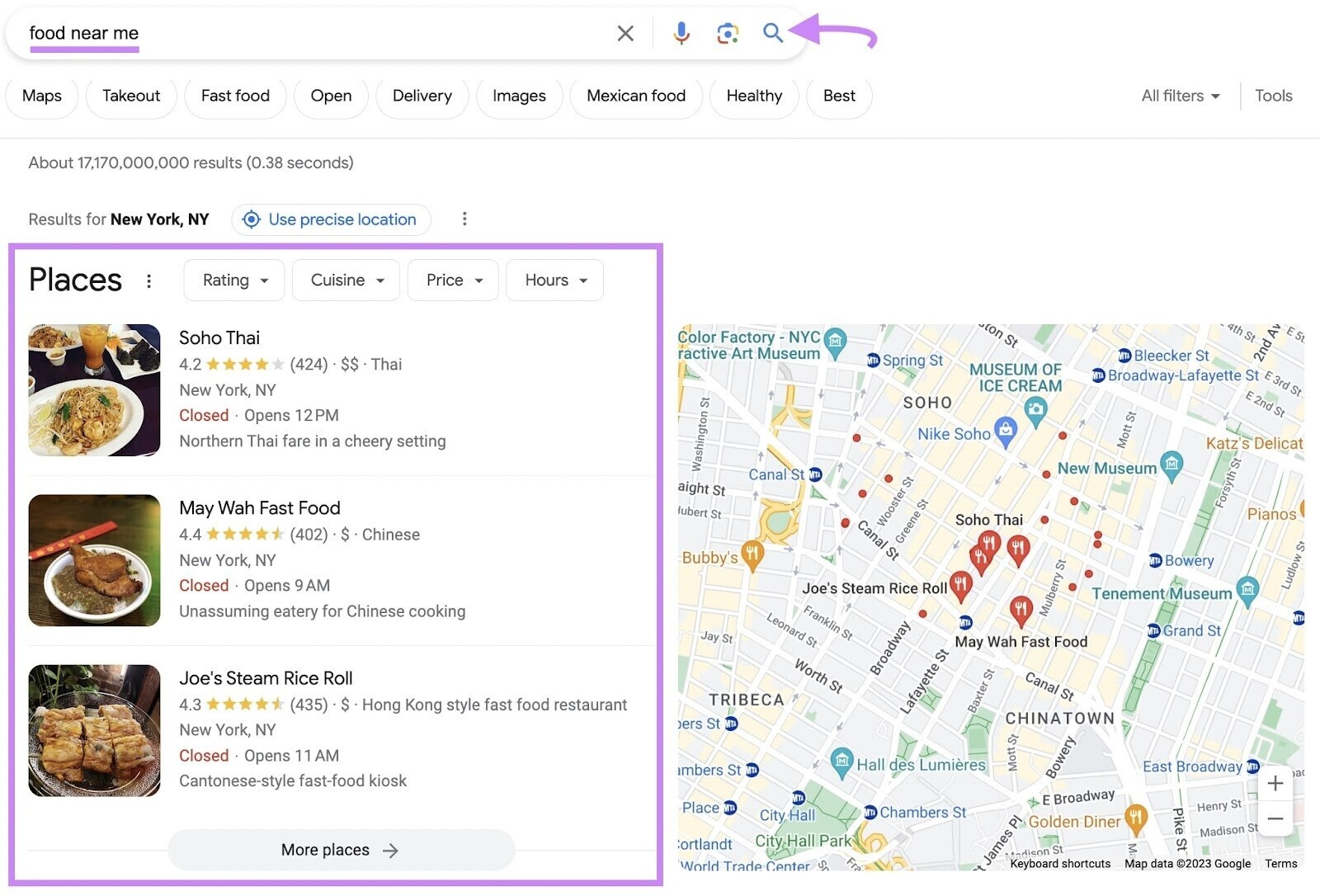
Optimizing for local SEO involves the following steps:
Further reading: Local SEO: What It Is & How to Do It
4. Perform a Technical Audit
Technical issues on your website can prevent Google and other search engines from crawling (discovering) and indexing (ranking) your pages.
Addressing these issues through a technical audit can improve SEO performance and help your website generate more organic traffic and conversions.
You can use two free tools to perform a technical site audit:
If this is your first time using Search Console, read our Search Console beginner’s guide to learn how to set it up.
If you haven’t used Site Audit before, this tool will analyze your website and provide data and insights on a wide range of potential technical SEO issues.
To get started, head to Semrush, select “SEO” from the menu on the left, and then click “Site Audit.”
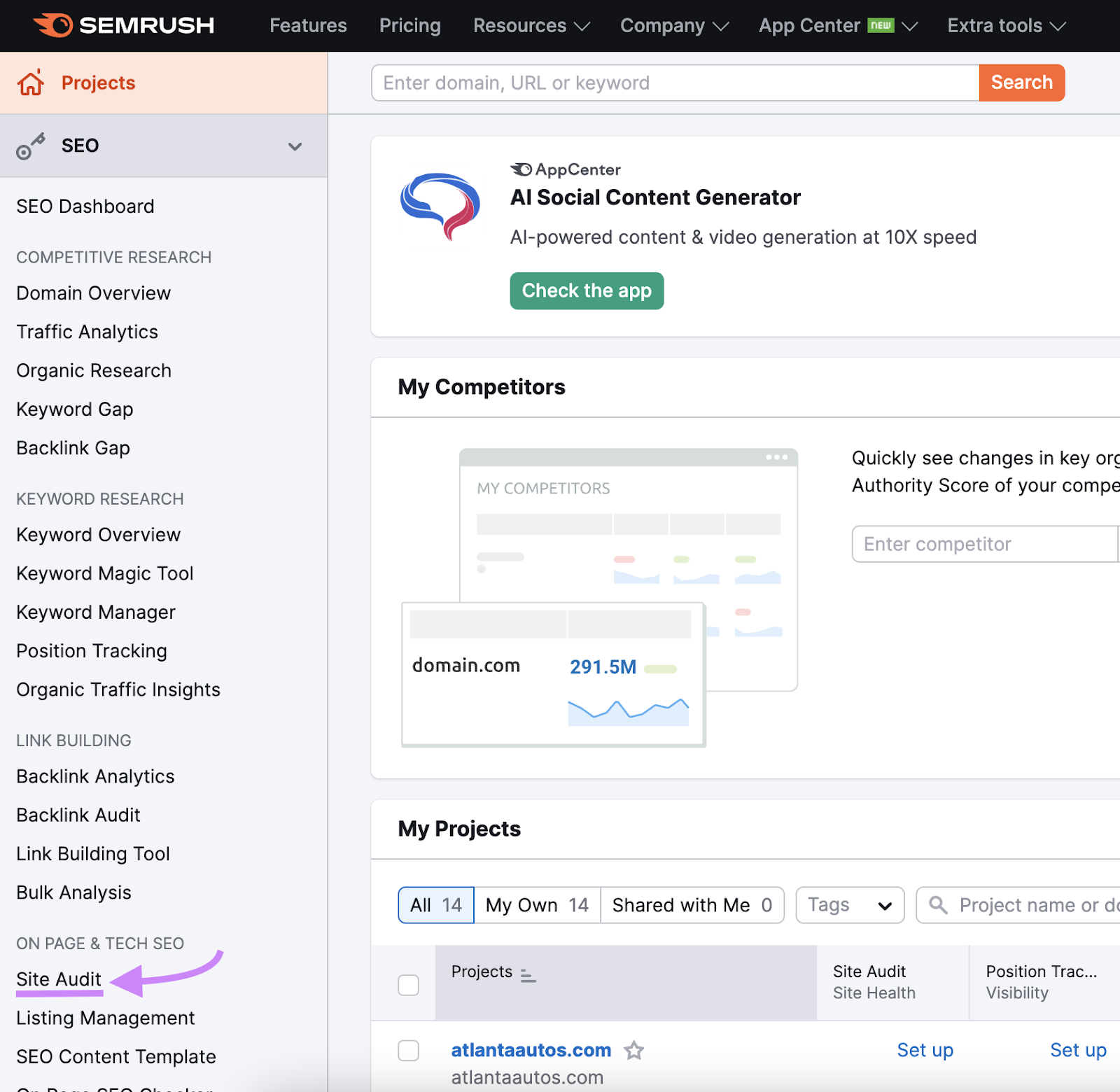
Click “Create project” to set up your first crawl.

Enter your URL in the “Domain” field, enter a project name in the “Project Name” field, and click “Create project.”
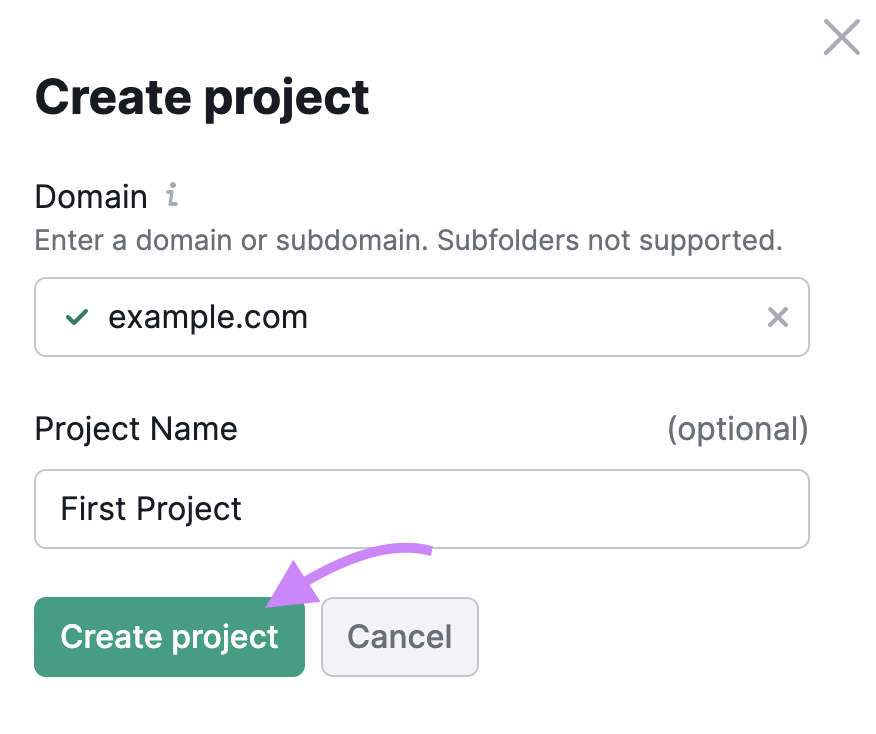
Next, head to the Site Audit tool and select your domain.
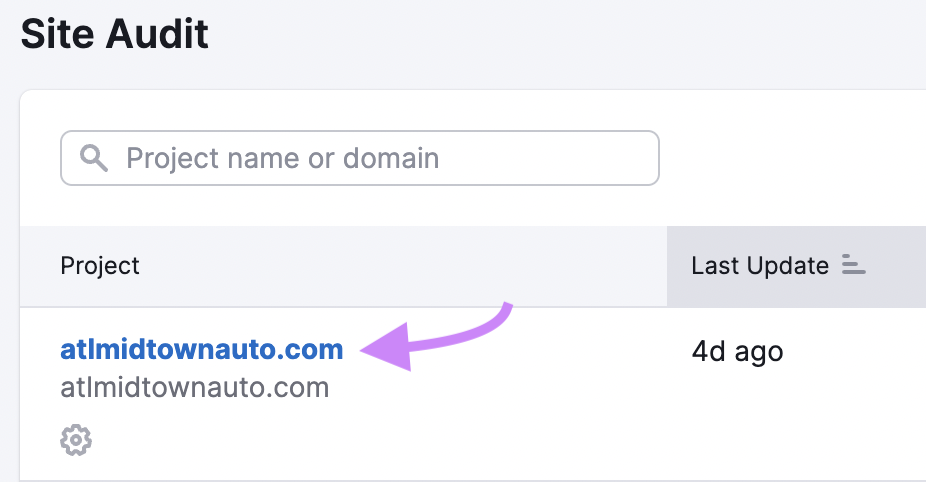
When you select your domain, the “Site Audit Settings” window will pop up. You can use our detailed setup guide to change the settings. For now, use the default settings.
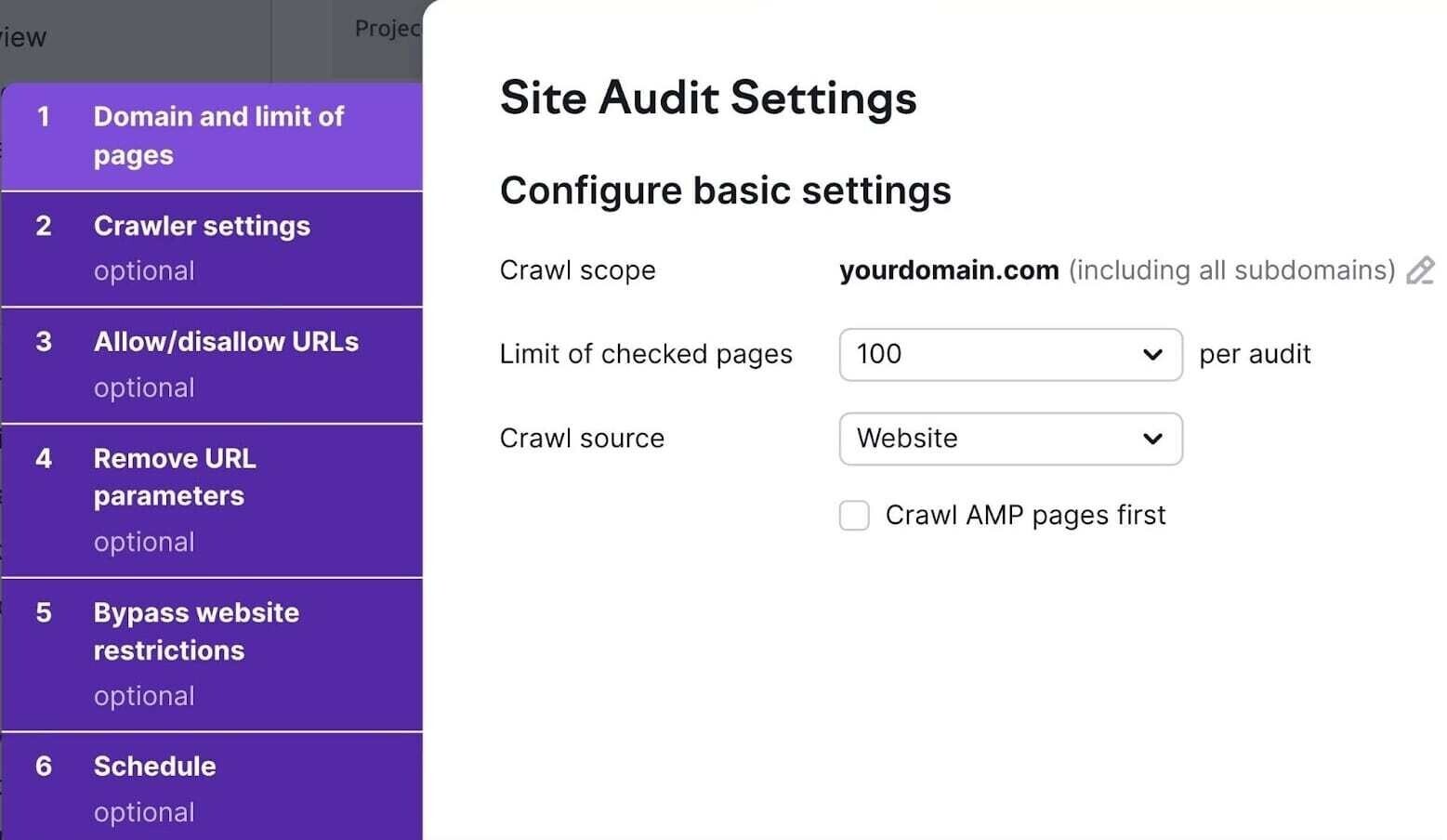
Click the “Start Site Audit” button at the bottom of the window to begin your audit.
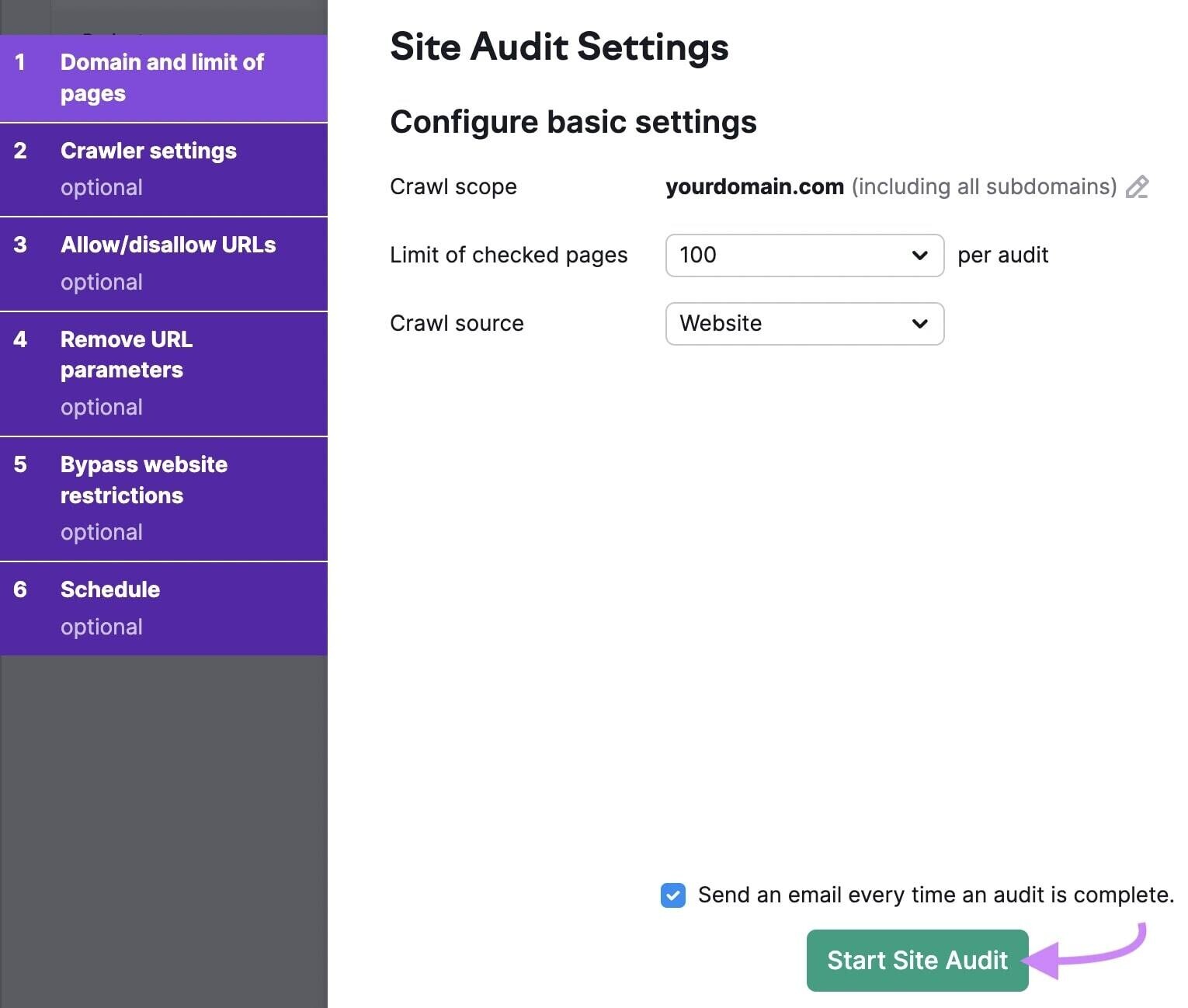
When Site Audit finishes analyzing your site, it will display a “Site Health” metric.
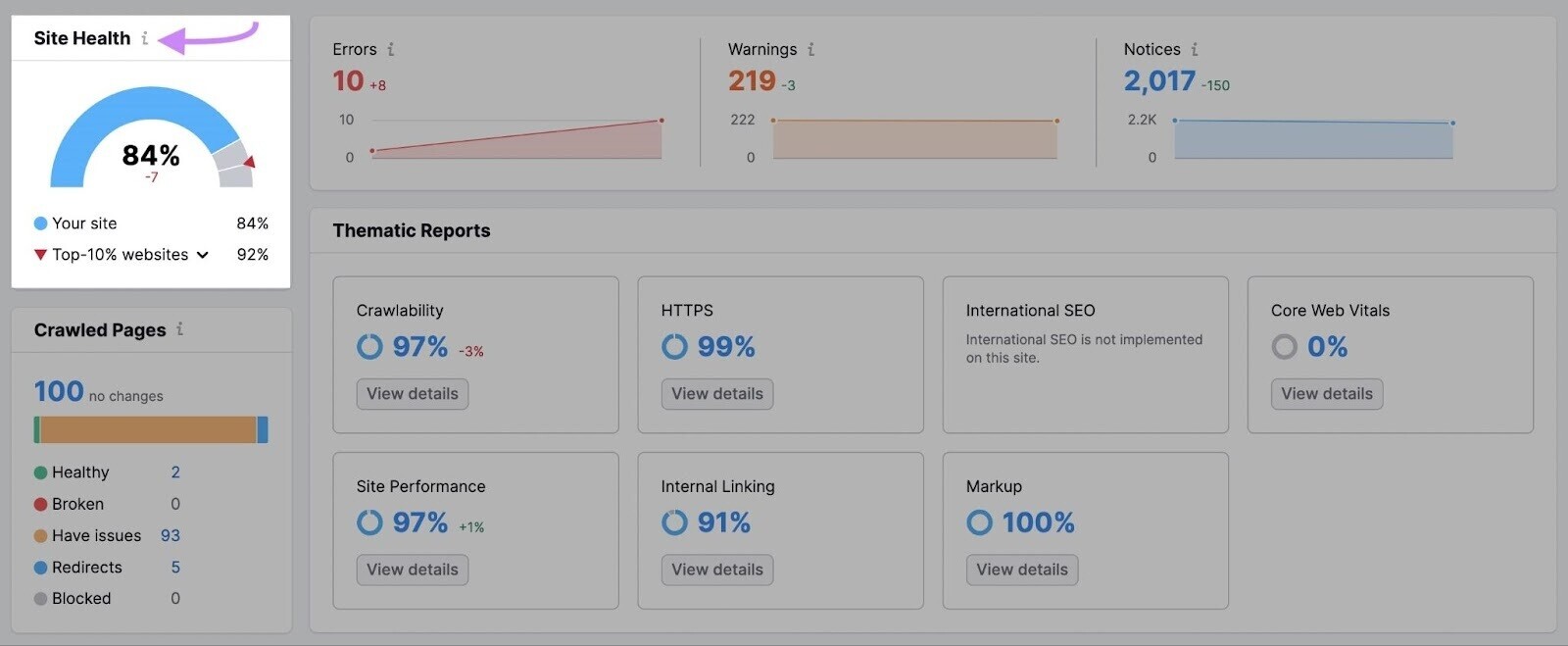
Site Health indicates your website’s health on a scale of zero to 100. It also shows how your site measures up against the leading sites in your industry.
The report also contains an overview of technical issues ranked by severity level: errors, warnings, or notices.
Click “View details” for a more detailed explanation of each issue.
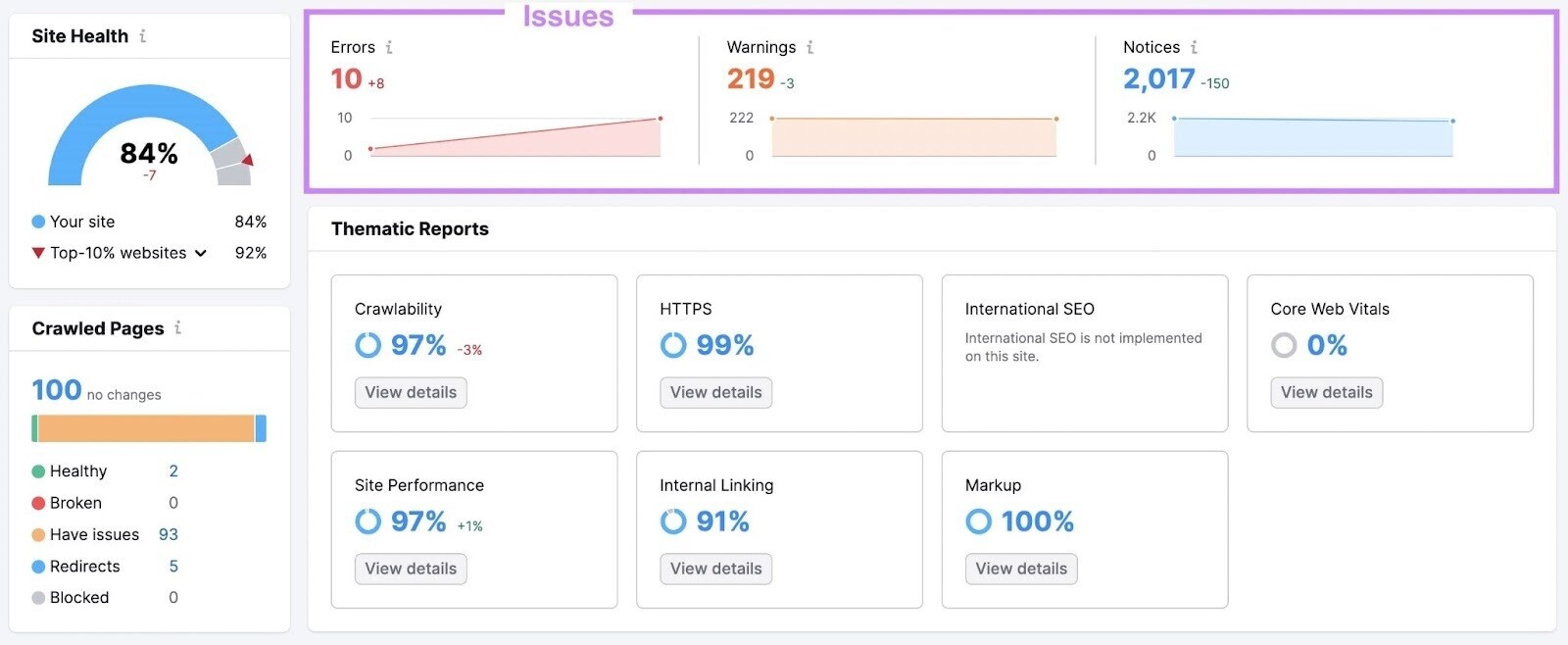
Switch to the “Issues” tab to get a complete list of all the technical issues on your site, along with the number of pages affected.
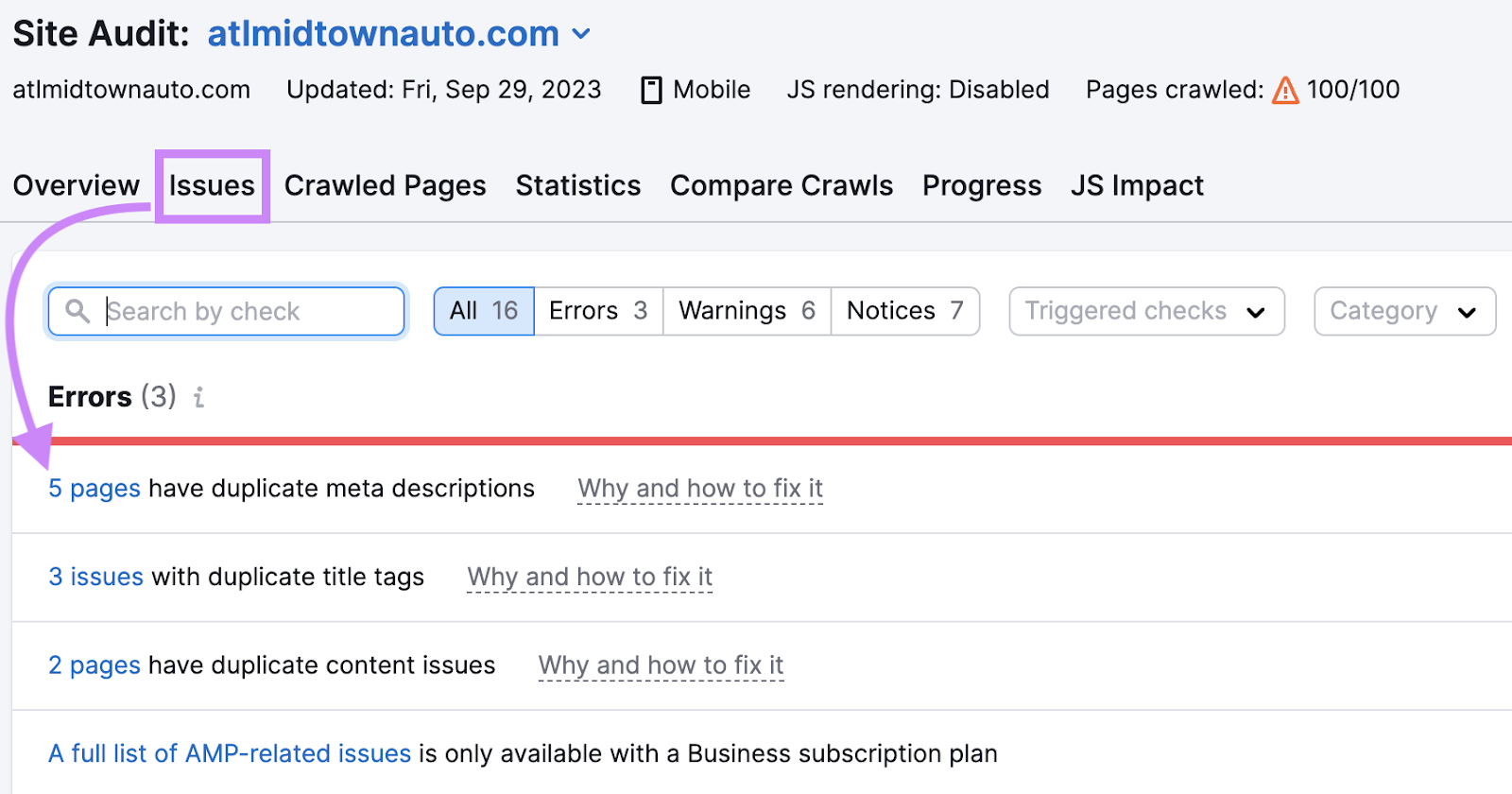
Click the “Why and how to fix it” link next to an issue to get a description of the issue, guidance on how to fix it, and links to tools and resources.
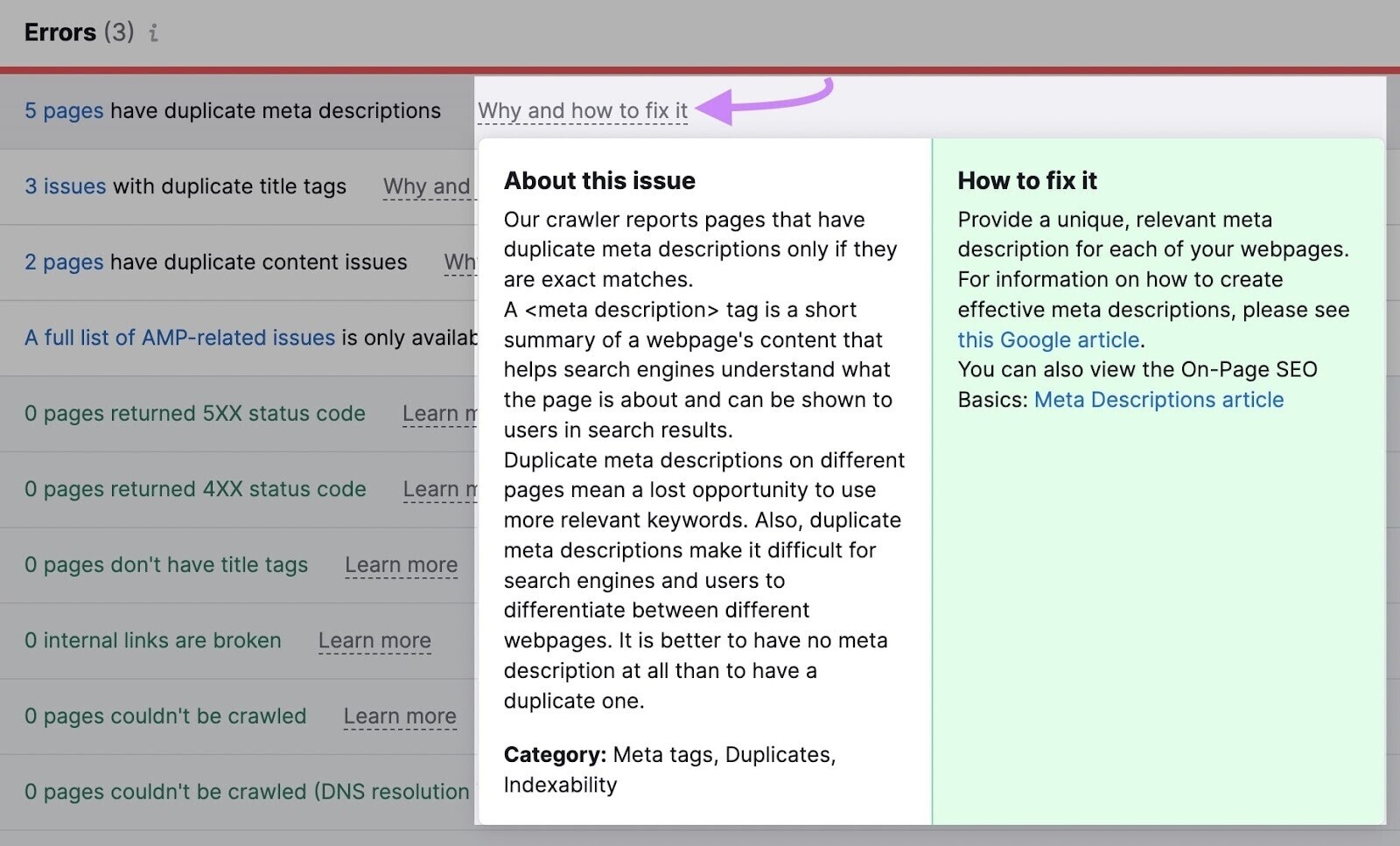
Check out our detailed guide to technical SEO audits for more info on using Site Audit to optimize your website.
Further reading: Google Analytics for Beginners: Getting Started with GA4
5. Create a Free Google Business Profile
Google Business Profile (formerly Google My Business) highlights your reviews, website, phone number, hours, and address so people can find you.
This helps you appear in search results when someone searches for your business’s name or related keywords on Google Search and Google Maps.
Creating a Google Business Profile is free and can help increase brand visibility, gain credibility via reviews, and improve your local SEO results.
Get started by visiting the Google Business Profile site and adding or updating your business’s information, including a description, photos, and more.
Further Reading: How to Add Your Business to Google & Google Maps
Content Marketing Ideas for Small Businesses
Content marketing involves creating and sharing useful content to engage your target audience.
You can create content on your website (like blog posts, ebooks, or white papers), for social media sites like Instagram or TikTok, or for other websites such as contributed columns and guest posts.
Content can take almost any form, like:
- Infographics and landing pages
- Short-form videos
- Podcasts
- Blog posts, ebooks, and whitepapers
- Surveys, quizzes, and games
In short, content is anything that entertains or informs people and makes them want to know more about your business. It costs nothing to start—just ensure it’s valuable and satisfies search intent.
Use the following content marketing small business ideas to attract, retain, and convert your audience.
6. Discover Useful Topics
Uncovering topics based on audience research can help you create a content strategy and plan that resonates with your target market.
How-to guides, top 10 lists, tips and tricks, best practices, and business insights are all great ways to provide value.
But how do you know which topics to cover?
Use the Semrush Topic Research tool to create a list of high-quality and relevant content ideas.
Here’s how:
Open Semrush, click “Content Marketing” from the left-hand menu, and click “Topic Research.”
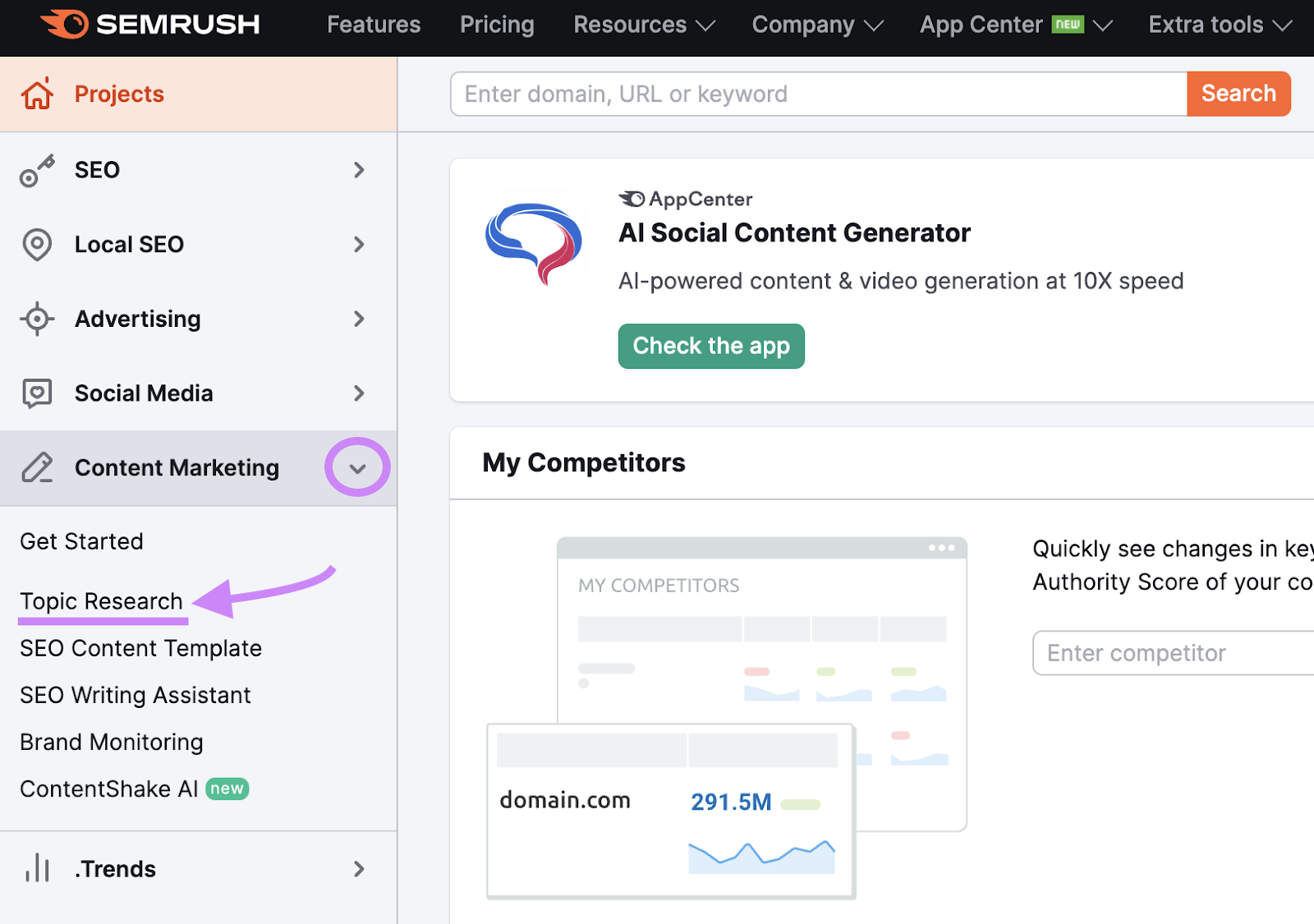
Enter your chosen topic in the “Enter topic” field, then click “Get content ideas” to start your research.
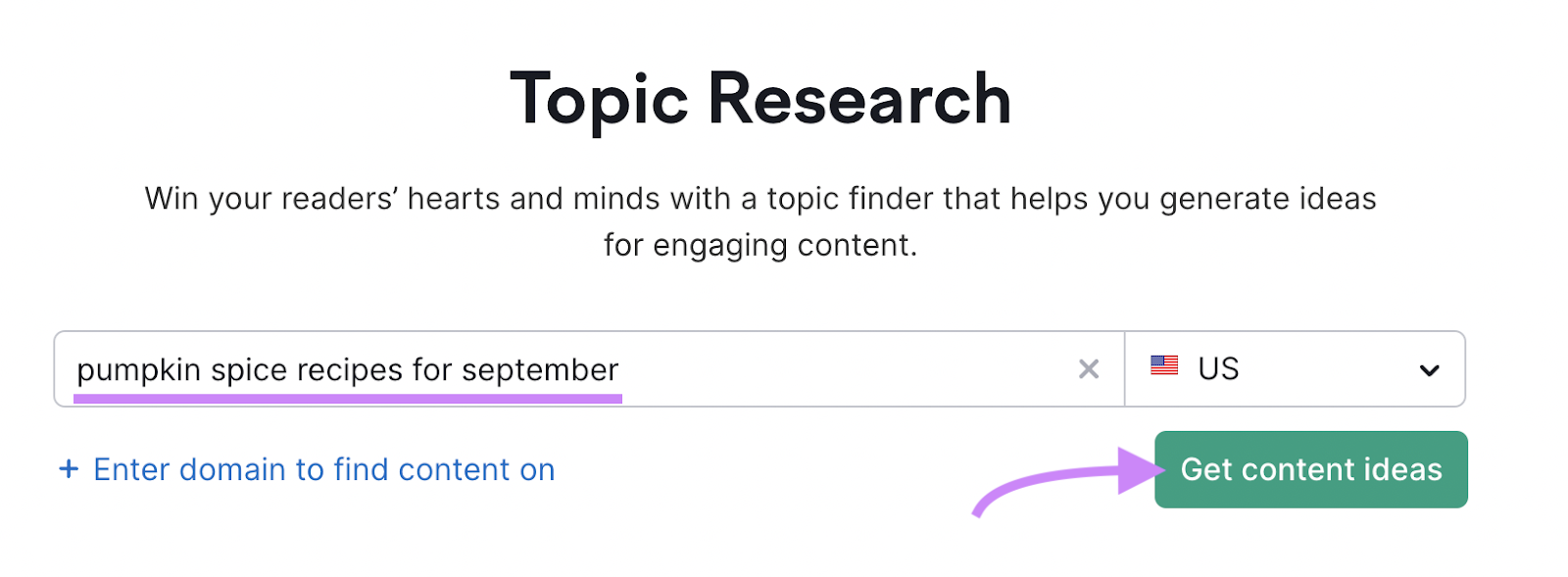
After a few moments, Topic Research will provide an analysis of your topic and a set of expandable cards with the most relevant subtopics.
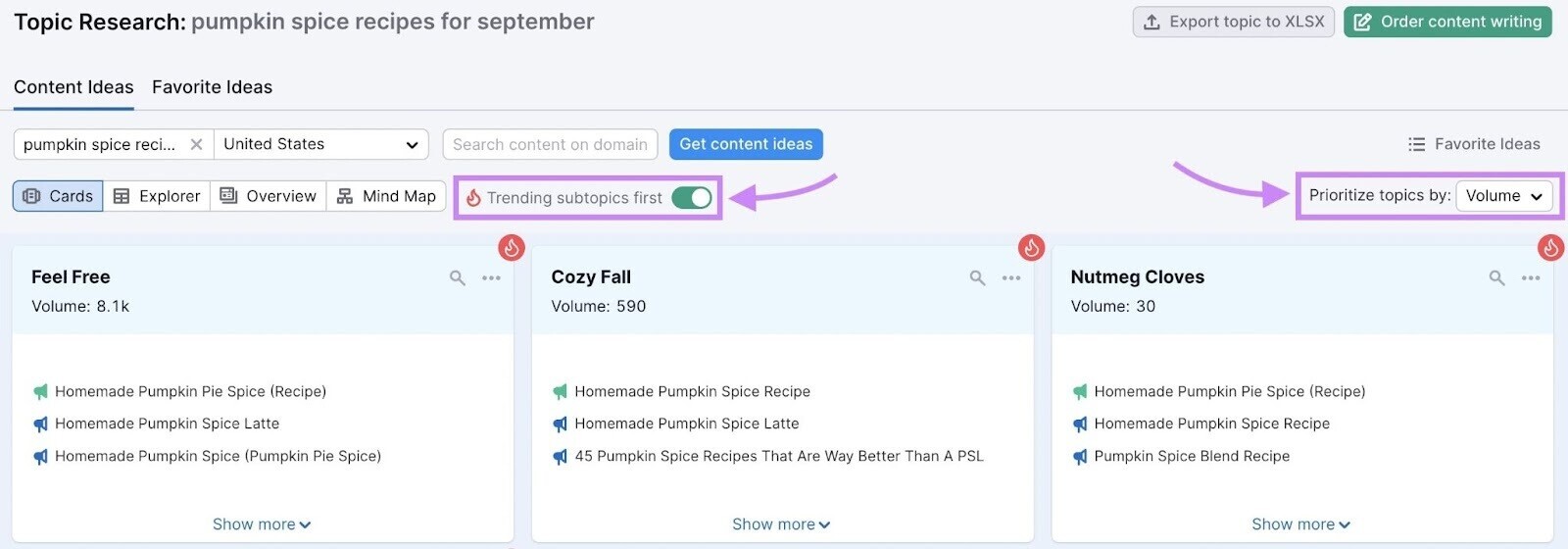
You can prioritize the cards by:
- Volume: See the results people search for the most
- Difficulty: See which topics require less effort for promotion
- Topic Efficiency: Sort topics based on both volume and difficulty
Toggle “Trending subtopics first” to see the most popular subtopics over the past 60 days.
For a more visual presentation of the subtopics, click on the “Mind Map” tab.
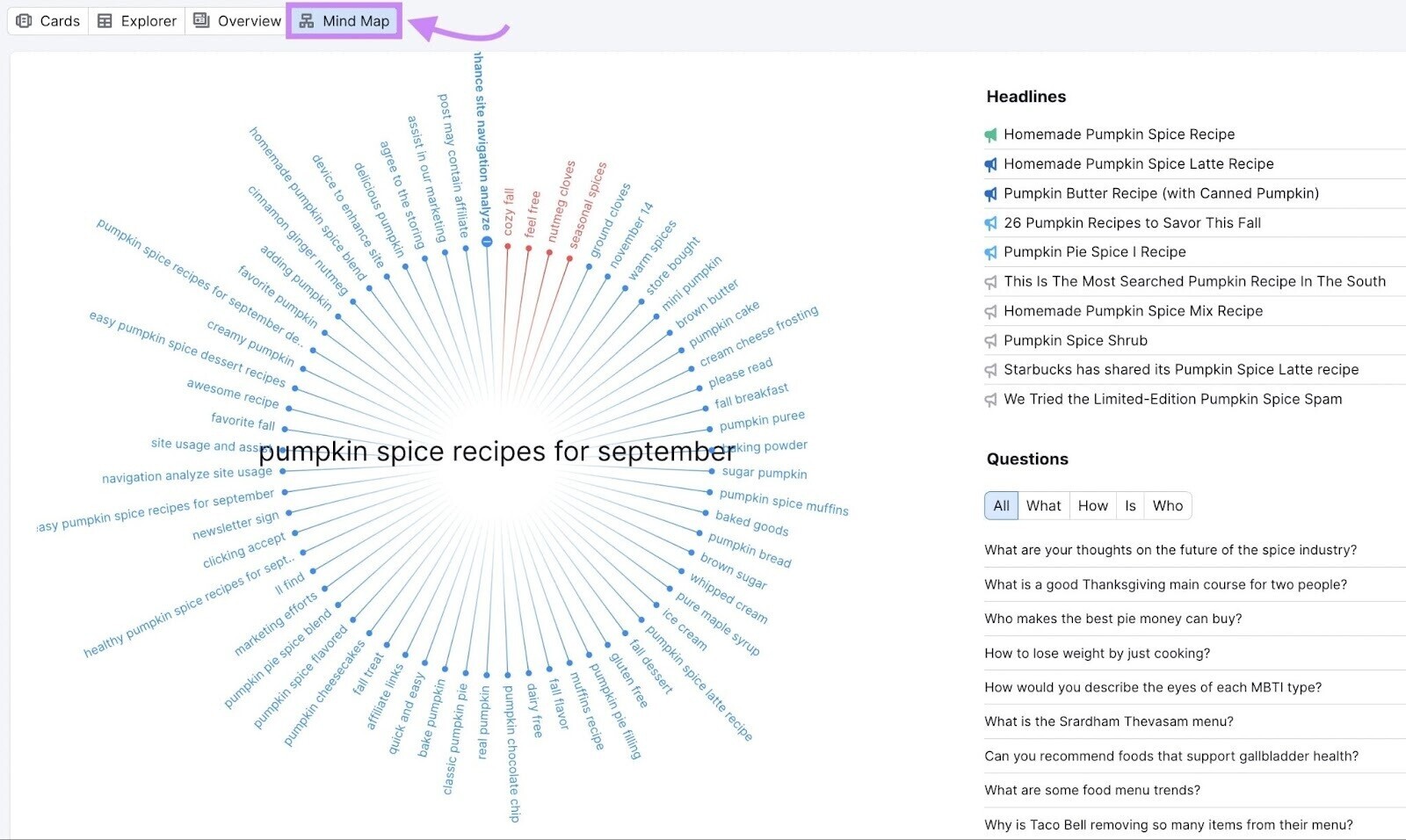
Clicking on a subtopic card will bring up 10 popular related headlines. Topic Research sorts the headlines by the number of backlinks on each page.
The color of the bullhorn next to the topic shows that topic’s resonance—the impact or influence this topic may have on your audience. The green bullhorn shows the headline(s) with the highest resonance.
Click the plus sign to the right of any headline to add it to your favorites list:
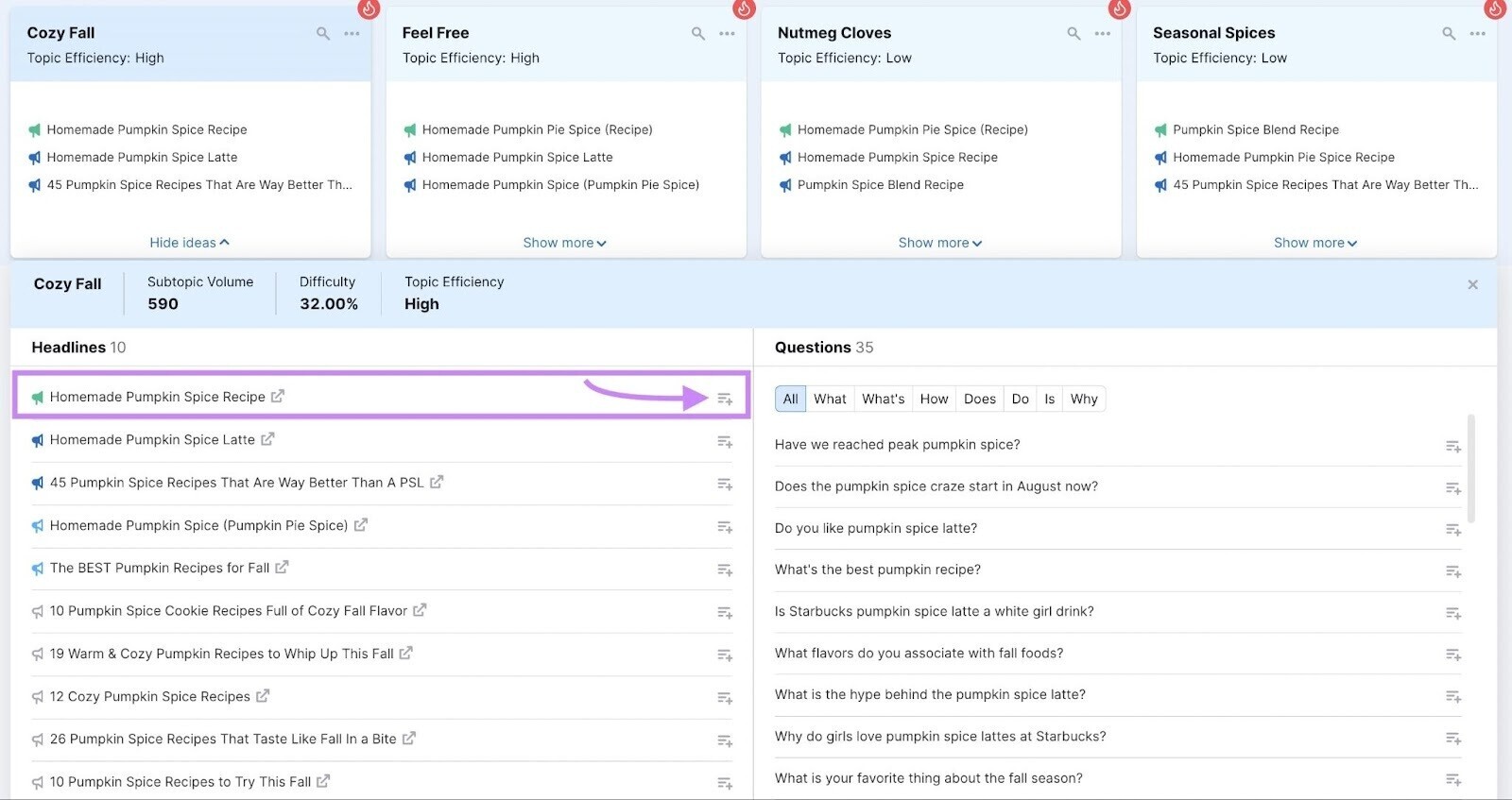
The subtopic card also contains common questions people ask about the topic. Use the list of questions to tailor your content for a particular search intent.
Finally, the subtopic card contains a list of related searches. Address these searches in your content to increase its relatability.
7. Maximize Engagement with Video
Create videos showing how to complete a task, like repairing a washing machine or building a digital marketing campaign to provide solutions to common pain points for your audience.
Video is also a great way to share product demos and interviews, announce new products or features, and share news about your business.
The best part? It’s completely free if you do it yourself using a smartphone.
Keep the videos short, relevant to your audience’s needs, and useful to maximize engagement.
Pro tip: Save money by using your smartphone and apps like YouTube, Instagram, TikTok, or Facebook to make and share engaging videos with your target audience.
8. Recycle or Repurpose Popular Content
Make the most of the work you’ve already done—and save money—by repurposing content.
Repurpose popular content pieces into other formats and share them across marketing channels.
Here are some small business marketing ideas for repurposing content:
- Expand a blog post into a whitepaper or an ebook
- Transform a successful webinar into a video tutorial
- Include a snippet of a blog post in a social media post
- Turn a piece of video content into a blog post
Find your most successful content from any medium or channel and brainstorm ways you can repurpose or repackage it.
9. Share User-Generated Content
Build community and engagement with user-generated content (UGC). Encourage your social media followers to create content around your brand so you can share it on your other channels and social media.
Best of all? This effective marketing idea is free.
The simplest way to generate UGC is by asking. Even your company’s biggest fans might not think to create a video or a tweet about your product. But if you ask them, they might be more than happy to help spread the word.
Here’s an example from clothing retailer Boathouse:

They have a branded hashtag to collect UGC, and encourage shoppers to “hashtag your look” on social media. They even incentivize it with a $50 gift card for the best content.
Note: Always get permission before sharing UGC and credit the content creator.
Build a social media presence to increase brand awareness and engage potential customers. Create high-quality content to build a following and drive traffic to your website.
Most social media platforms are free to use, making them cost-effective and powerful marketing tools.
Use the following social media marketing ideas for small business owners to boost your engagement and create a professional presence.
Choose the right social media platforms—Facebook, LinkedIn, Instagram, TikTok, Pinterest, and X (formerly known as Twitter)—to reach your audience.
Research which ones your target audiences uses and create a business account for each.
A business account lets you share contact information, reviews, updates, and news. It also lets you create and manage your own social media community.
Customize your profile with your logo, images, and video to raise brand awareness.
Take advantage of cover and profile pictures to share news and promotions like we did with our 100,000th customer celebration on the Semrush Facebook page:
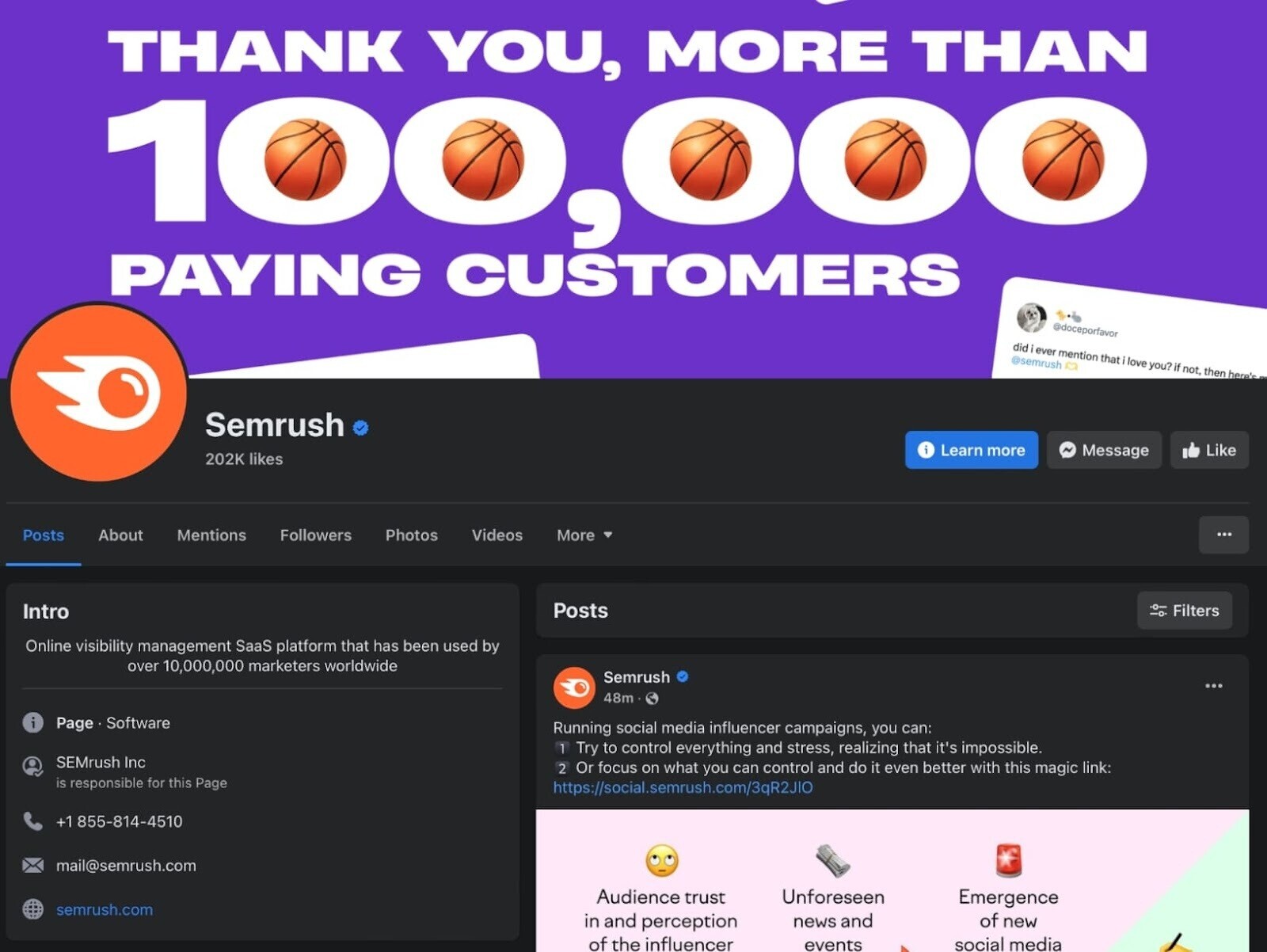
Ensure your business profile information is up to **** so customers will be able to reach you.
11. Engage Your Audience
Engage your audience to build trust and credibility in an authentic manner.
How?
Focus on having a conversation rather than constantly broadcasting self-promotional messages.
Some free small business ideas for building engagement include the following:
- Respond to customer or audience questions
- Run polls to get insights or learn about your followers
- Host contests that encourage people to share or comment
- Create a quiz that helps your audience learn something
- Tag or highlight key customers (with their permission)
- Ask for feedback directly
Build customer engagement by showing appreciation.
For example, athletic accessory brand Outway had the perfect reply to a customer’s question: it was prompt, friendly, helpful, and concise:

By replying to comments, it shows that person—and countless others—that the brand cares about its customers and that they actively want to engage with them.
12. Promote Your Content
One of the best free marketing ideas for small business owners is to promote blog posts, videos, and other content on social media channels.
Here are a few ways to promote content on social media:
- Tease content with article snippets or ephemeral story features (like Facebook and Instagram stories) to attract visitors to your website
- Include social media tags in your content pieces. Encourage visitors to share the content on their own social media networks.
- Consider how you can recycle or repurpose your content. Rather than simply linking to a blog post on your website, could you rewrite and format the content to work natively on LinkedIn or as a thread on X (Twitter)?
13. Join Industry Discussions in Niche Forums
Build connections and credibility by participating in niche forums and groups relevant to your business.
Beyond the major social media platforms, there are specialized sites and communities around the web you can join.
For example, the Social Media Today LinkedIn group is a great place for social media professionals and marketers to find resources and networking opportunities.
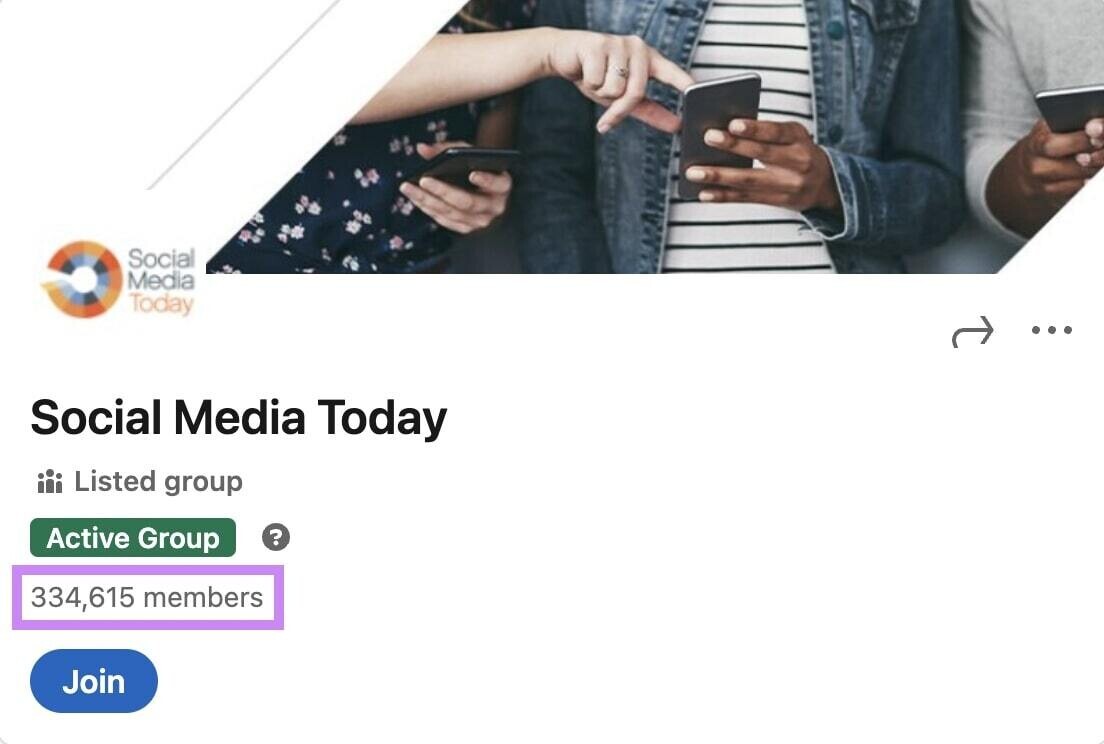
No matter your industry or niche, you can find groups and forums to match—or start your own if you’d rather. This could include Facebook Groups, niche social platforms like Untappd, and sites like Reddit that discuss a wide variety of topics.
Start discussions, provide useful insights, and discuss your business challenges. Check potential customers’ profiles to see what groups they take part in to find relevant sites to join.
Hashtags can help you reach a wider audience on social media.
Incorporate relevant hashtags into your social media posts like #fallfashion, #fitness, and #homedecor. Be specific, and don’t make them overly long. Location-based hashtags are also a great addition to posts—think #newyorkrestaurantweek and #arizonaevents.
You can also use hashtags to participate in global or national events. Just ensure it relates to your business.
For example, bidet maker Tushy participated in #NationalToiletPaperDay to engage their audience, reach new followers, and indirectly promote their product:

Get more followers and boost online credibility by displaying social media icons on your website.
Put the icons in the header or footer to ensure they’re visible on every page.
While you’re at it, use a social sharing plugin like Social Warfare or Revive Social to encourage readers to share your website and blog content online.
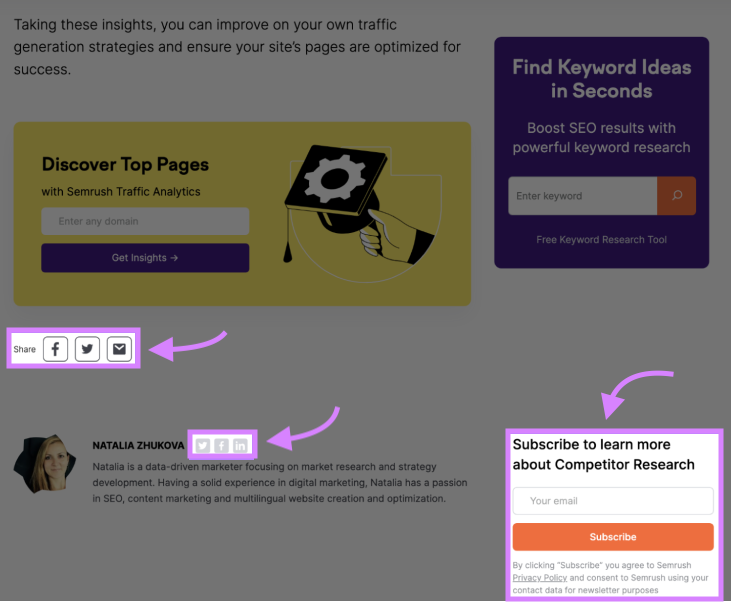
Further Reading: 17 Best Social Media Tools to Use in 2023
Email Marketing Ideas for Small Businesses
Email marketing helps build connections with your audience and drive traffic to your website.
Even better?
It’s inexpensive and scalable, making it another powerful and cost-effective marketing tool for your small business.
16. Create a Regular Email Newsletter
Create a regular email newsletter to engage prospective customers.
Use a budget-friendly email marketing tool designed for small business owners like MailChimp or Brevo.
Both tools offer free and low-cost plans to help you create email newsletters.
In your newsletter, include snippets of popular and relevant content, news about your company, and new promotions and offers. Include a call to action for each section of the newsletter like “Read More,” “Learn More,” and “Sign Up Now.”
For example, Skillshare used multiple calls to action, including “Don’t Miss Your Free Trial,” in the following marketing email:
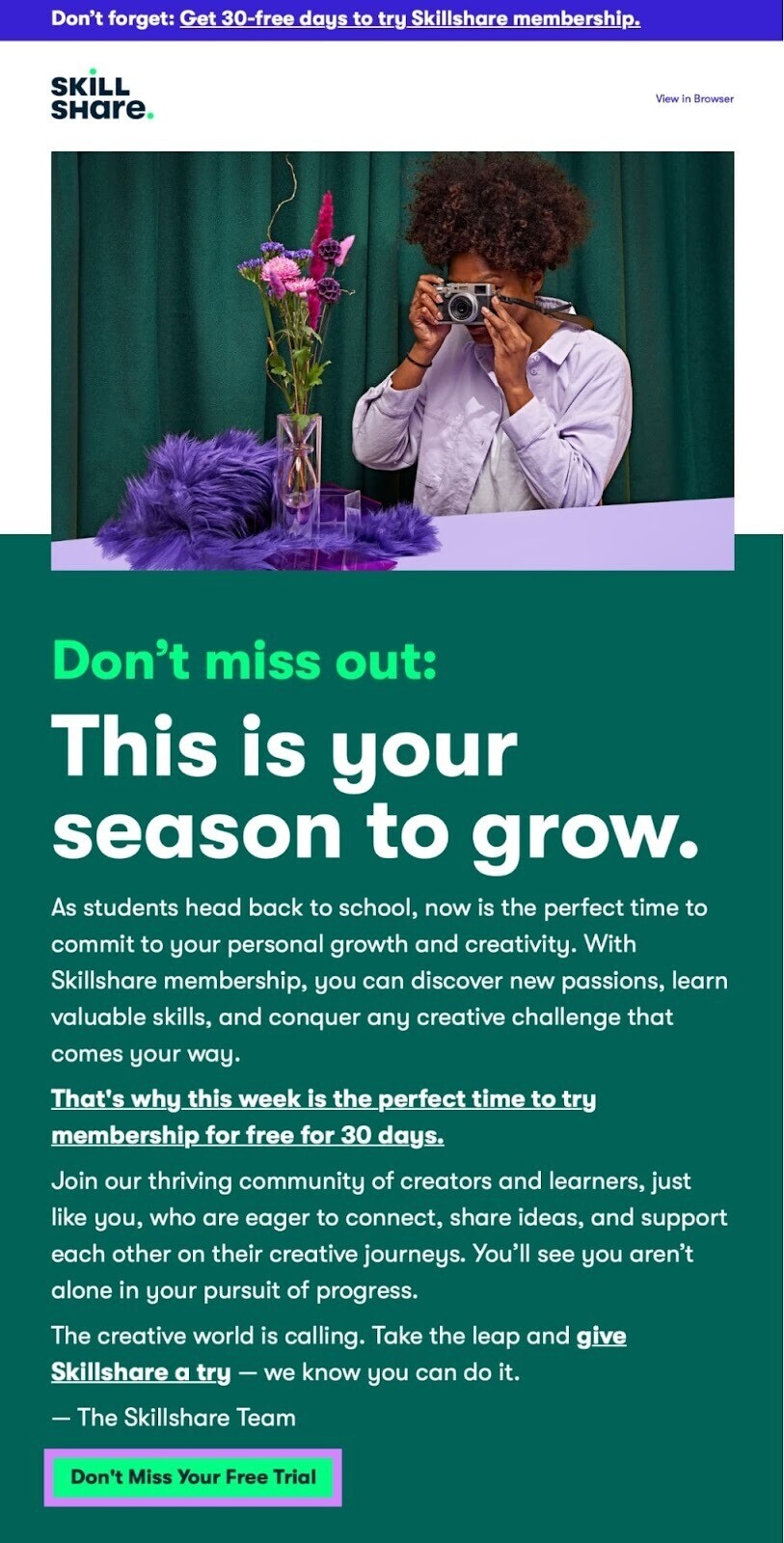
Pro tip: Grow your email newsletter subscribers by offering a signup incentive like a one-time discount code, chance to win a free product or service, or exclusive content.
17. Run A/B Tests
Optimize your email marketing efforts by testing different email formats with an A/B test. Most email marketing platforms will offer this capability, making experimenting with different subject lines, images, content, layouts, and offers easy.
You can also measure KPIs like open rates and conversions to see what resonates best with your audience.
Use what you learned to tweak your emails and try again. Continue measuring and refining your emails until you find a top-performing format.
Further reading: What Is A/B Testing? A Comprehensive Beginners’ Guide
18. Personalize Emails for Better Open Rates
Use marketing personas, targeted email lists, and user data to personalize your offer and improve engagement.
According to McKinsey, 76% of subscribers are more likely to buy from a brand that personalizes their experience, and 78% are more likely to refer that brand to a friend.
Personalization can be as simple as using someone’s first name in your solicitation:
Hey Tyler,
Thanks for subscribing to our email newsletter!
More advanced options include segmenting your list to send customized content to specific groups or individuals.
For example, if someone browses your website’s selection of phone cases, you could send them an email with a link to a buyer’s guide for choosing the right one.
Further Reading: How to Win People Over with Compelling Email Content
Pay-Per-Click (PPC) Marketing Ideas for Small Businesses
Paid advertising is a subset of marketing that involves paying for advertisements to promote a product or service.
While pay-per-click (PPC) advertising campaigns can get expensive, you can set a predetermined budget upfront to stay within your means.
19. Discover PPC Keywords for Your Business
Keywords are the foundation of your PPC campaign. They determine when and where your ads appear and how much you pay for each click.
However, you’ll need to choose the right keywords for your business and product to reach your target audience, increase conversions, and manage your marketing budget.
You can use Semrush’s Keyword Magic Tool to find keyword suggestions along with monthly search volume, competitive density, and cost per click (CPC). Use this information to plan and manage your PPC campaign.
Here’s how:
Open Semrush, click “Advertising” on the left-hand menu, and then click “Keyword Magic Tool” to begin.
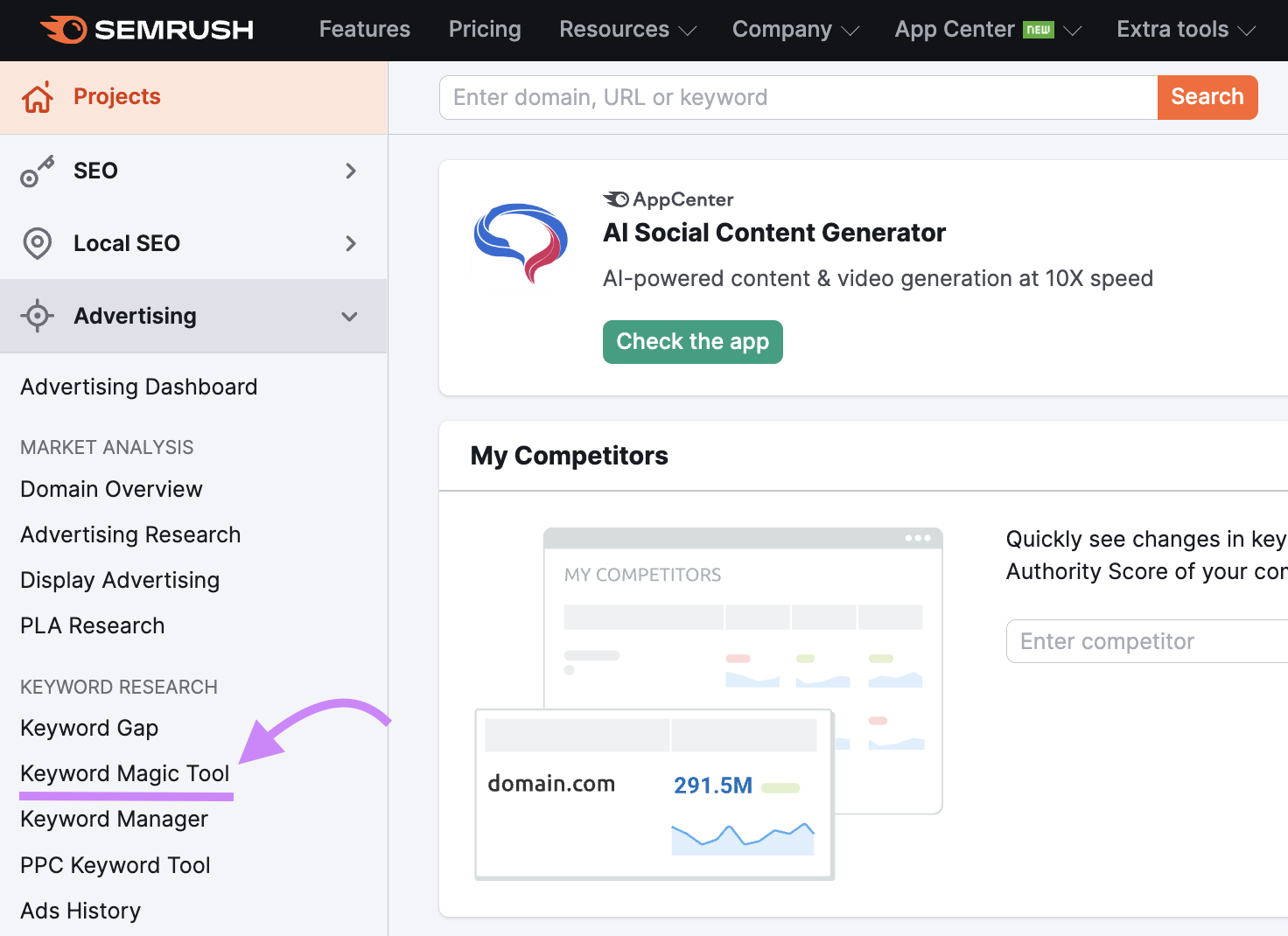
Enter a seed keyword (a general search term related to your market or business) into the search bar, select the country where you want to search keywords, and click “Search.”

You’ll see a list of keywords. Use the filters to refine your results and identify keywords that make the most sense for your business.
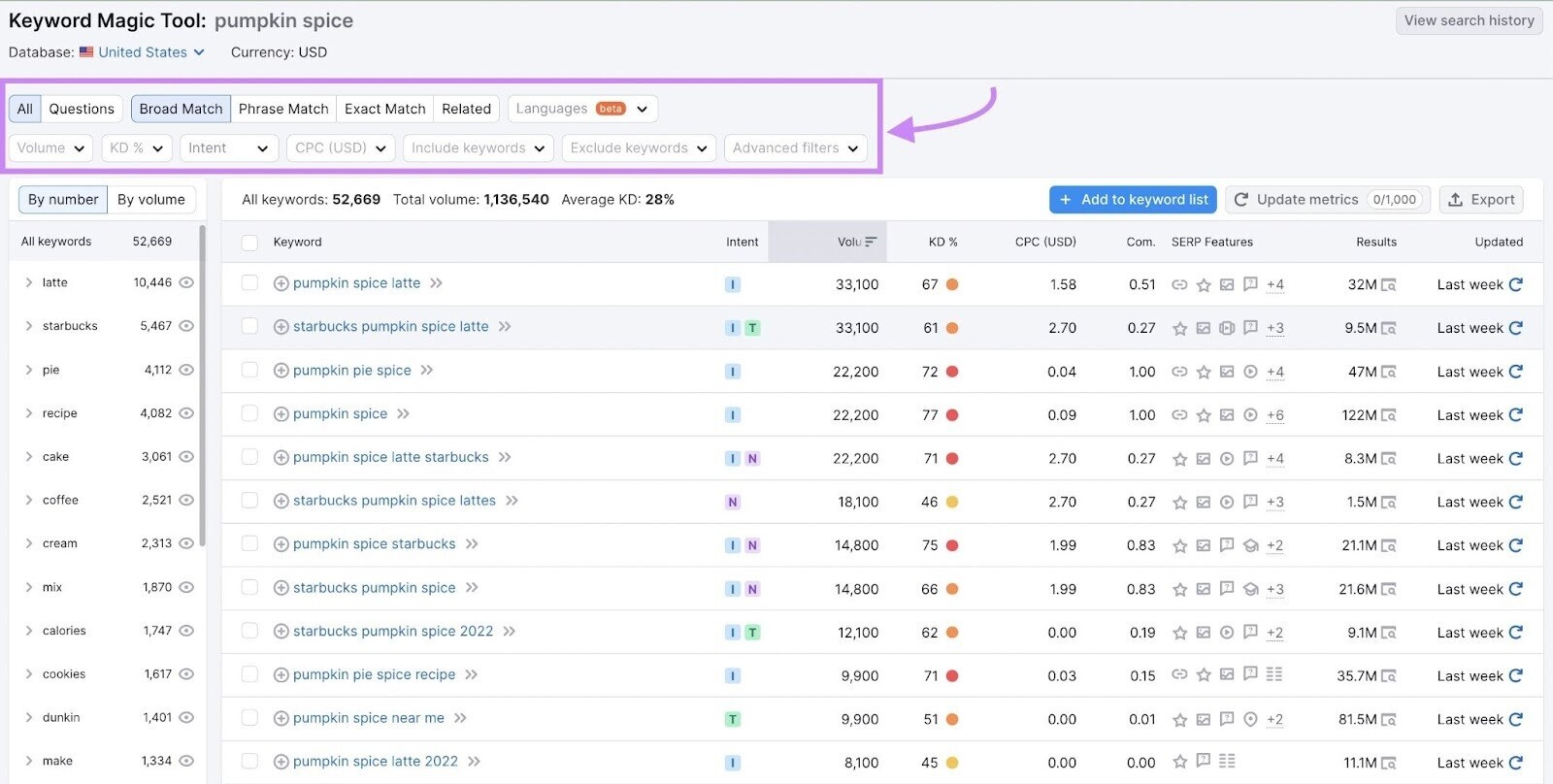
Select relevant keywords by checking the boxes and then clicking “+ Add to keyword list” to export them to Keyword Manager.
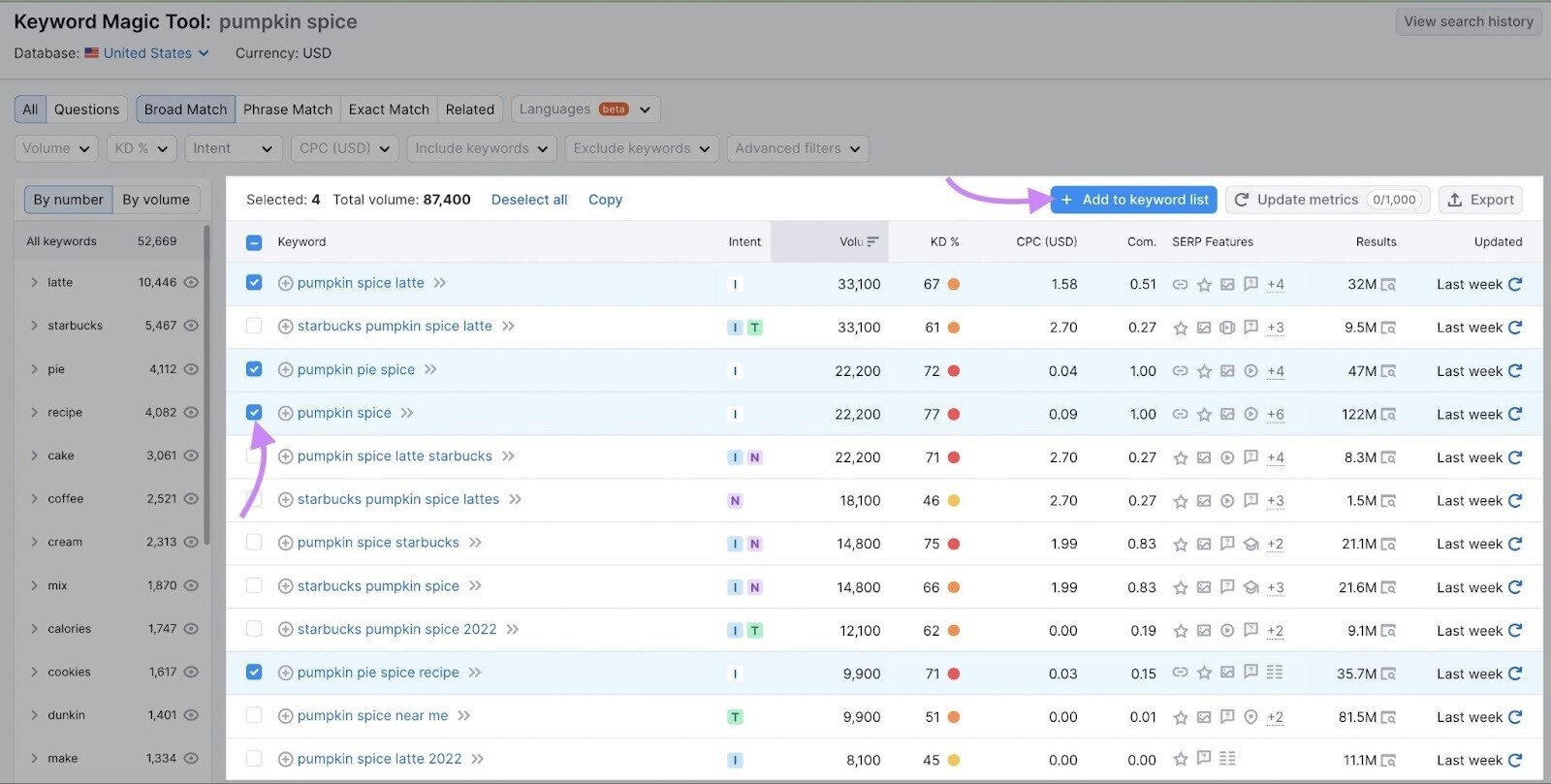
Keyword Manager stores all your keywords in a central location. It also lets you generate keyword clusters, sort the clusters in a mind map, and access real-time metrics.
Note: You can export keyword lists into a CSV, XLSX, or CSV file.
Once you’ve built a list of relevant and high-opportunity keywords, you can import your list directly into Google Ads to set up a campaign.
Social media platforms like Meta (Instagram and Facebook) and Pinterest make it easy for small business owners to run PPC campaigns.
If you’re new to paid advertising, start with a small budget and use filters to refine your audience as much as possible.
Most platforms provide in-depth guides to setting up, managing, and budgeting for your campaign, but generally, the same rules apply.
The more you know your target market, the more tightly you can focus and target your ads—which gives you more value for your money. Invest time in keyword and topic research and customer demographics to improve your understanding of your audience.
Further Reading: 12 Best PPC Tools for Research, Automation, and More
Creative Marketing Ideas for Small Businesses
A small budget doesn’t mean you can’t find creative ways to promote your business.
The ideas below, from influencer marketing to podcast advertising, can help you connect with your audience in unique ways.
21. Build Partnerships with Influencers in Your Niche
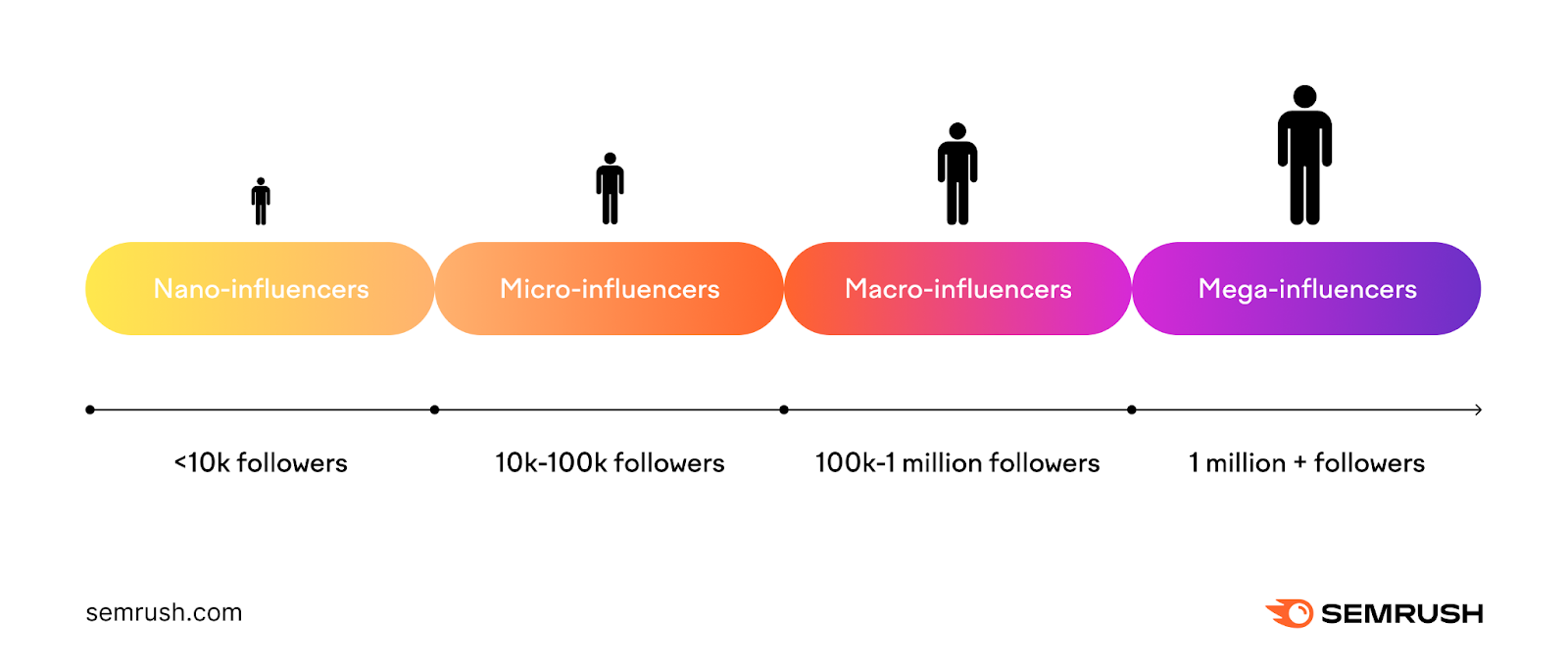
Seek out and connect with influencers in your niche to promote your brand. Influencers can appear in ads for your brand, promote your business on their account, and even hold livestreams where they unbox your product live or use your service in real time.
Keep in mind that nano- and micro-influencers will be the most affordable. These influencers have small but highly engaged niche audiences that can help your brand build authentic and meaningful connections.
Nano- and micro-influencers typically charge anywhere from $10 to $500 per post, which is great for your potential ROI.
Further reading: Influencer Marketing: What Is It and How to Build a Solid Strategy
22. Advertise on Podcasts
Buy ad or sponsorship spots on podcasts related to your niche. This gives you instant access to an already-engaged audience. It also helps you build brand credibility and trust with your audience.
Many podcast platforms like Buzzsprout and Soundcloud now offer a self-serve ad platform like Google Ads or Facebook (Meta). This means you can plan and run your own campaign and set a budget that works for your business—big or small.
Music streaming service Spotify also offers low-cost interactive podcast ads starting at $250 per campaign.

23. Offer Free Trials
Offer a limited free trial of your product or service to let customers try before they buy. Check in with the customer during the trial to offer tips and tricks and answer questions.
At the end of the trial, ask the customer for their feedback. If they chose not to purchase your product, ask them what influenced their decision. Use this information to improve your product and free trial experience.
Referral Marketing Ideas for Small Businesses
Word-of-mouth marketing is one of the most powerful ways to build trust and grow sales.
In its 2022 Consumer Intelligence Survey Series on Trust, PwC reported that 91% of consumers are likely to buy from a company they trust, and 88% are likely to recommend the company to others.
When customers trust your business, they are more likely to recommend it to their friends and family.
Use the referral marketing ideas below to engage customers and build credibility.
24. Encourage Happy Customers to Share Their Experiences
Encourage customers to share their feedback on Yelp, Google, social media, and other local business directories.
When a happy customer talks about a positive experience with your business, it will inspire confidence in prospective customers.
For example, Green Earth Pest Control’s customer Ben M. left a five-star review and positive feedback on Yelp about their experience:
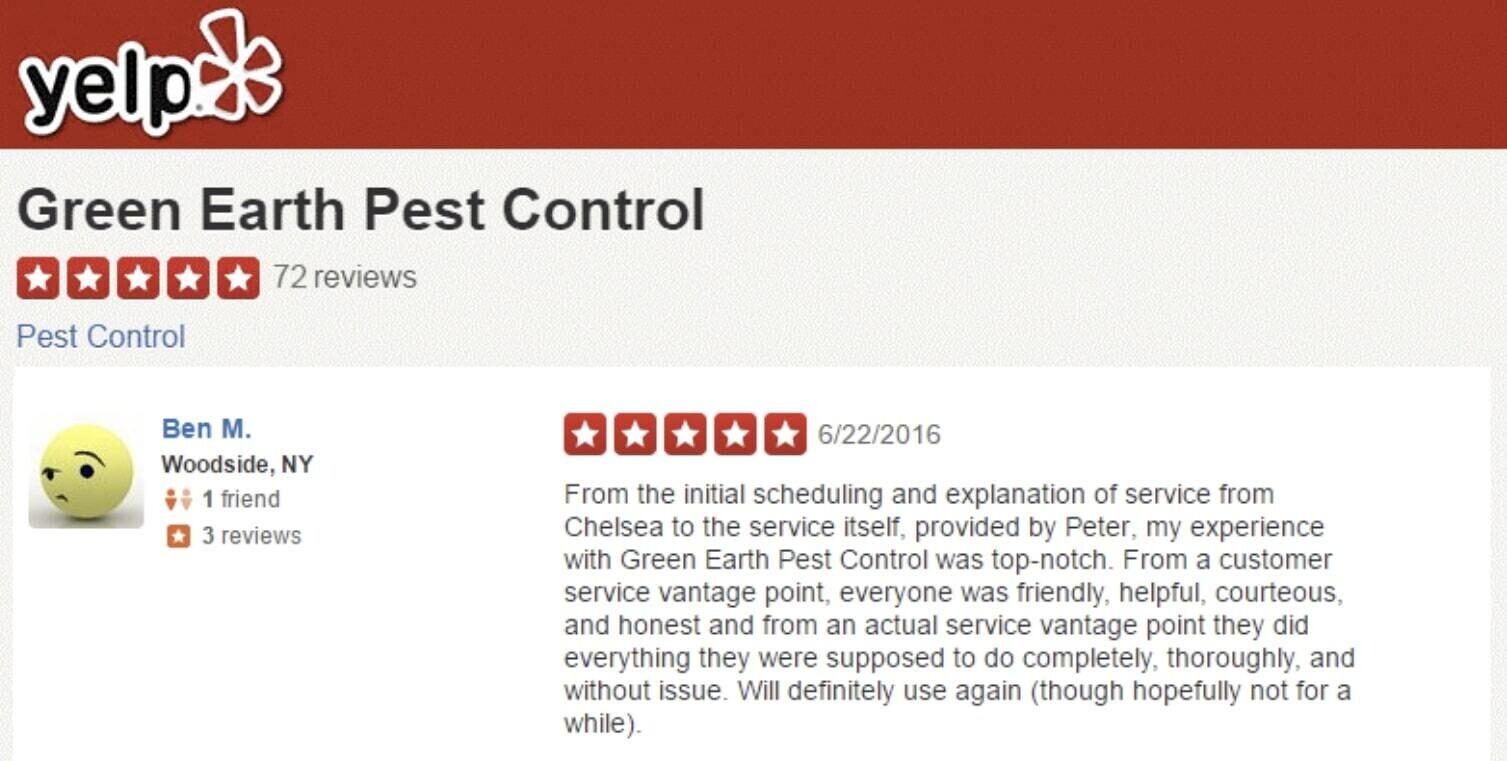
Encourage customers to rate and review your business simply by asking. Email, text, and in-person review requests are a great way to receive a steady stream of online feedback.
Pro tip: Target customers who are likely to give you a great review. Email a satisfaction survey to customers and then send a follow-up referral request to the ones who rate your business the highest.
25. Offer Referral Incentives to Existing Customers
Offer existing customers a free product, discount, or another perk to encourage them to refer friends and family.
Promote your referral program on your website, social media, and store if you have a physical location. Automate the process with referral tools like Influitive or ReferralCandy.
As long as the value of the incentive is less than the value of a new customer, this can be a profitable strategy for you.
26. Share Testimonials to Build Credibility
Positive testimonials are a powerful endorsement for your business.
To take advantage of this free marketing tactic, highlight testimonials on your Google Business Profile, social media channels, website, and marketing materials.
Authentic endorsements from satisfied customers are a persuasive way to turn prospects into paying customers.
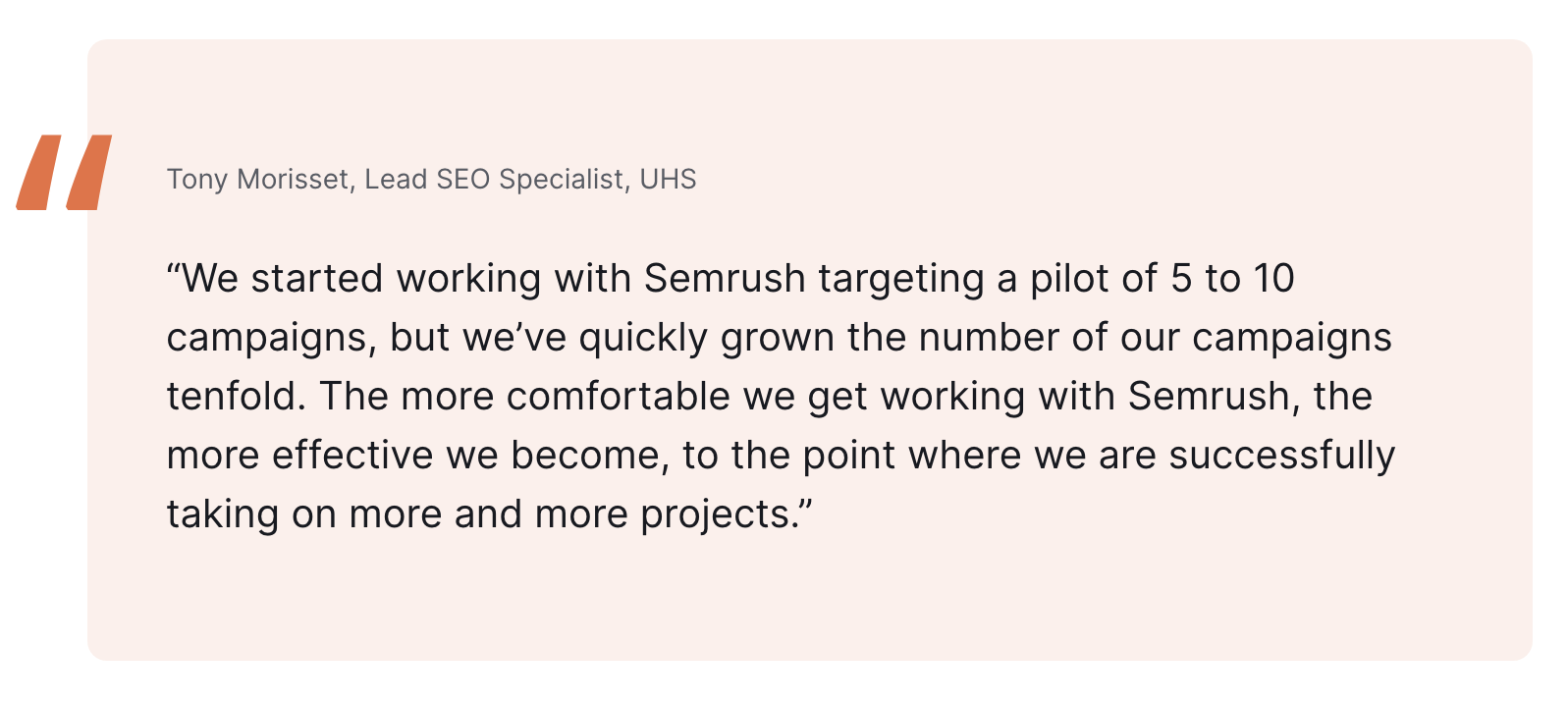
Affiliate Marketing Ideas for Small Businesses
With affiliate marketing, you can earn money in two ways: by creating an affiliate marketing program for your business that others can join and by joining a complementary business’s affiliate marketing program.
Affiliate marketing is a performance-based marketing strategy where individuals or businesses (affiliates) earn a commission by promoting products or services of a company (advertiser) through unique referral links, and generating sales or leads for that company.
Here’s how you can get started with affiliate marketing.
27. Join an Affiliate Network
Join an affiliate program like the Semrush Affiliate Program to earn extra money. If accepted, you can promote the affiliate program’s product(s) on your blog, social media, email, and more using an affiliate link.
When your followers use that link to purchase the affiliate product, you earn a commission.
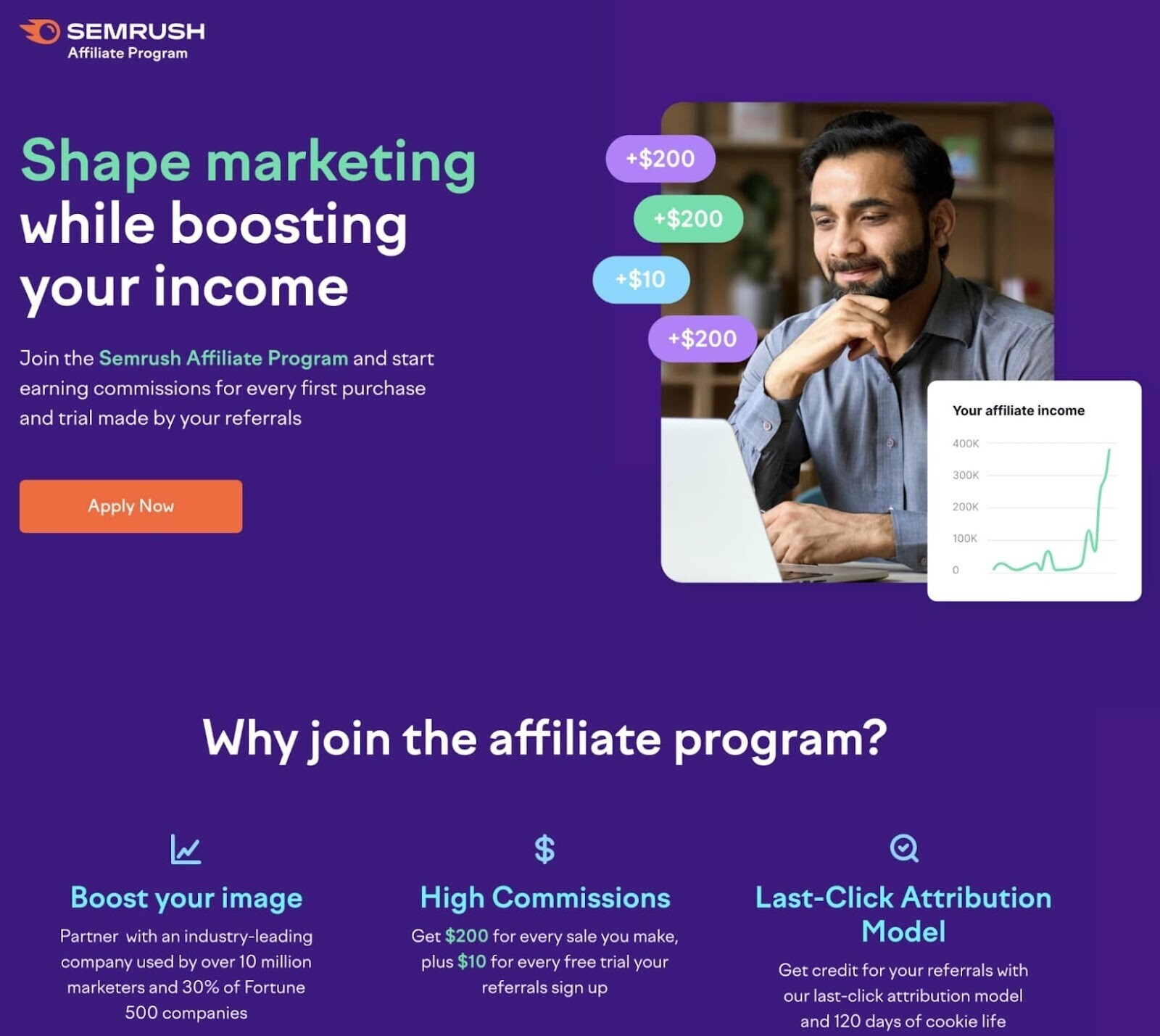
You can also join popular affiliate networks like ShareASale, CJ (Commission Junction), and ClickBank, to be considered for a wide variety of affiliate opportunities.
If you don’t want to promote others’ affiliate products in your content, consider creating your own program for others to join.
Further Reading: What Is Affiliate Marketing: How to Start in 4 Easy Steps
28. Try Joint Marketing Campaigns
Enter into mutually beneficial relationships with another business or brand through joint marketing or co-marketing campaigns.
Cross-promote each other’s companies or work together on a marketing campaign that promotes both parties to take full advantage of this free marketing tactic. Use affiliate links to track conversions.
You can also join forces with another small business to create unique events that you both promote on social media.
For example, local Arizona restaurant 32Shea teamed up with another small business in the area, Shea Cheese, to offer a wine and cheese tasting:
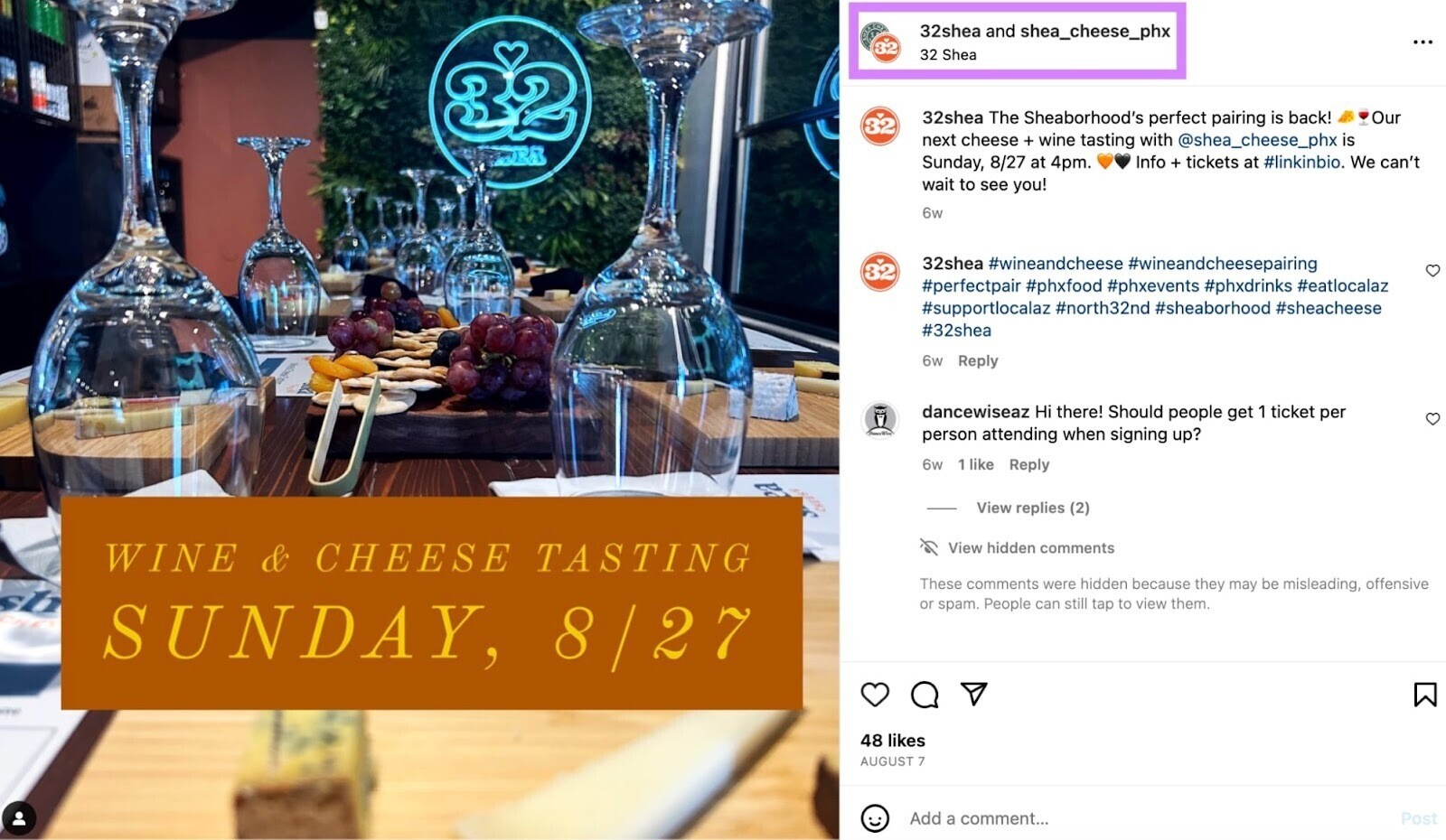
Further reading: How to Choose a Co-Marketing Partner: Experts Offer Tips
Local Marketing Ideas for Small Businesses
If your business has a physical location or serves a specific region, local marketing is a fantastic way to reach area customers.
Combine local SEO with in-person marketing to raise brand awareness and engage potential customers.
29. Try Guerilla Marketing
Guerilla market uses creative, low-cost strategies to raise brand awareness. Done right, a fun guerrilla campaign can generate massive attention via social media and traditional media.
Guerilla marketing ideas are limited only by your imagination and budget.
Here are some effective tactics you can use:
- Public art: Use stencils, stickers, or sidewalk chalk to broadcast hashtags, your web address, or other promotional messages. You might also consider sponsoring public artwork at a local abandoned building. (Research local laws and regulations first.)
- Flash mobs: Hire a group to perform a public performance to highlight your brand
- Publicity stunts: Publicity stunts are any public display or act that generates attention via news or social media. Stage your own stunts or sponsor an existing one.
30. Advertise with Your Local Chamber of Commerce
Get promoted on your local Chamber’s website, social media channels, and publications to expand your advertising reach. Consider sponsoring (and taking part in) social and charitable events like Chamber golf tournaments.
Ask your Chamber about hosting seminars or lunch and learn events where you can showcase your business.
Local media can help you get new customers year-round.
Gain exposure by pitching story ideas to local media, magazines, radio, and TV stations. You can also use free sites like Help A Reporter (HARO) to be connected with local journalists seeking expert quotes.
Another marketing idea for small business owners is to ask about advertorial and sponsorship opportunities with local media networks or content producers.
Consider producing a regular article, podcast, or community TV show to share advice or insights from your business. For example, you could host a show or webinar on personal financial planning if you provide financial consulting services.
32. Join Business Directories
List your business in local online business directories like Chamber of Commerce, trade, or online directories such as Zoominfo. Keep your information up to **** so people can reach you.
Save time by using the Semrush Listing Management tool to help you find business directories and add your information.
Here’s a quick walk-through of the free version of the tool:
Navigate to Semrush, click “Local SEO” from the left-hand menu, and click “Listing Management” to open the tool.
Enter your business name in the search box and click the magnifying glass.
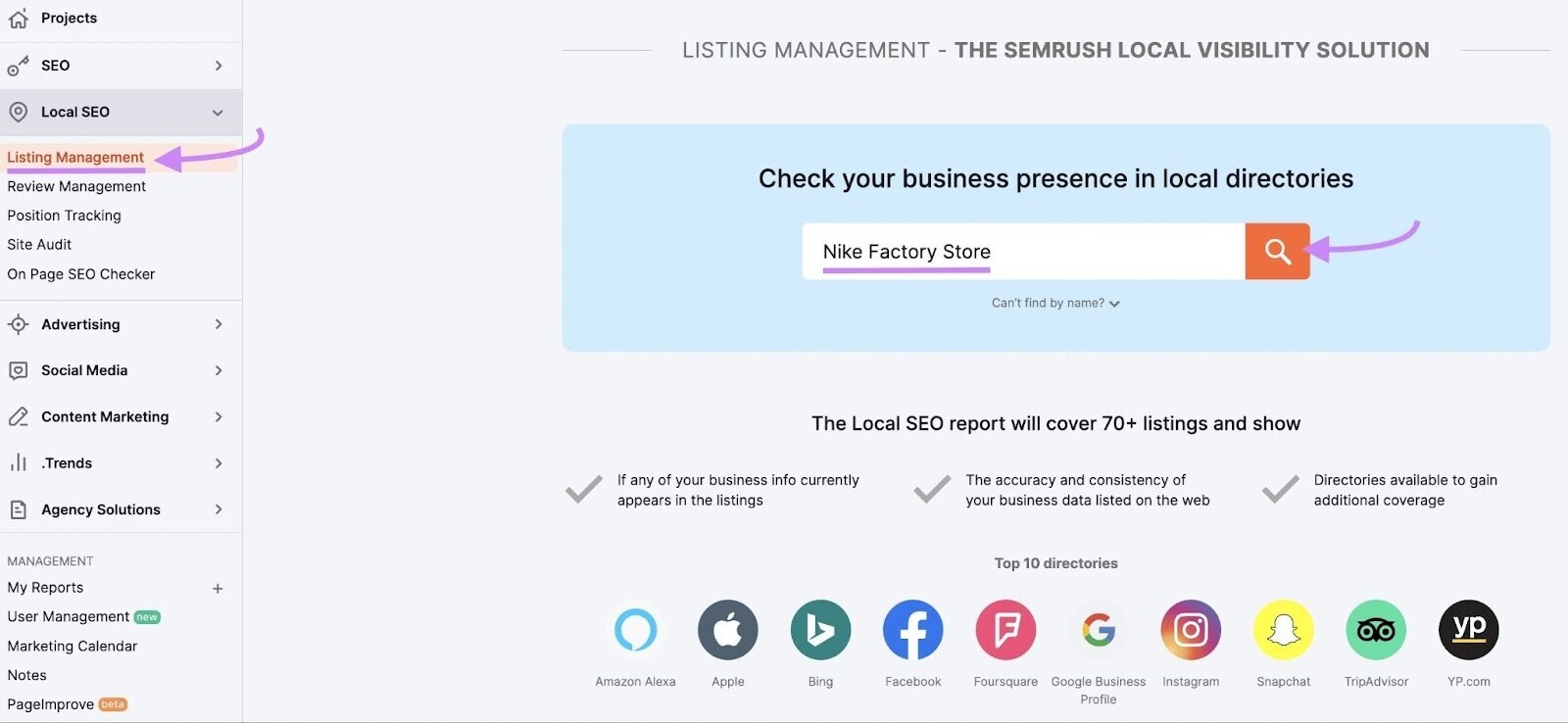
Listing Management will scan major directories for your business. When it’s finished, it will provide “Your Local Visibility Report” with the following information:
- Your overall “Online Presence” score (which shows how visible your business is online)
- Number of found listings
- Number of listings you should fix or update
- Average rating
- Total number of reviews
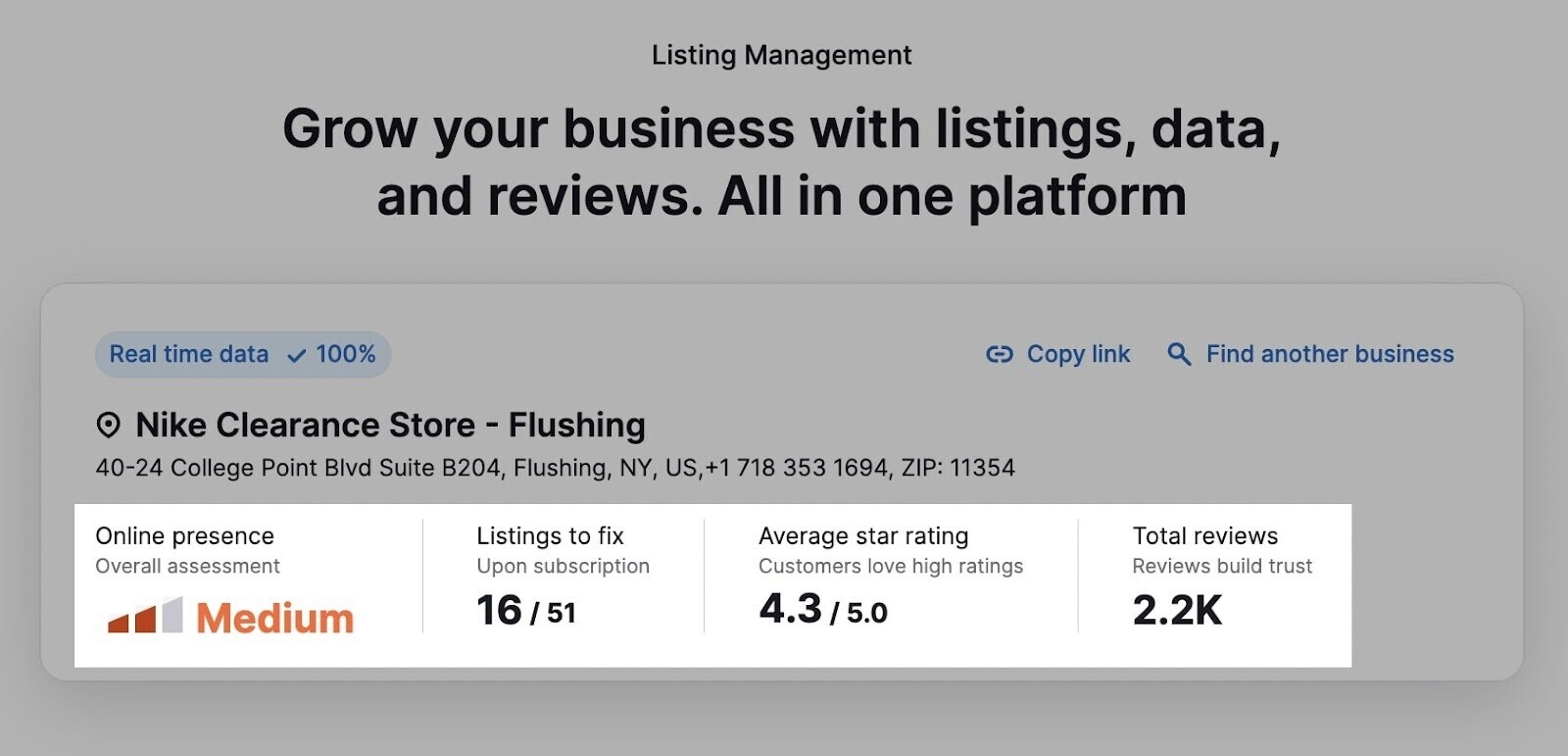
Under the report, you’ll find a list of directories you can join to expand your coverage.
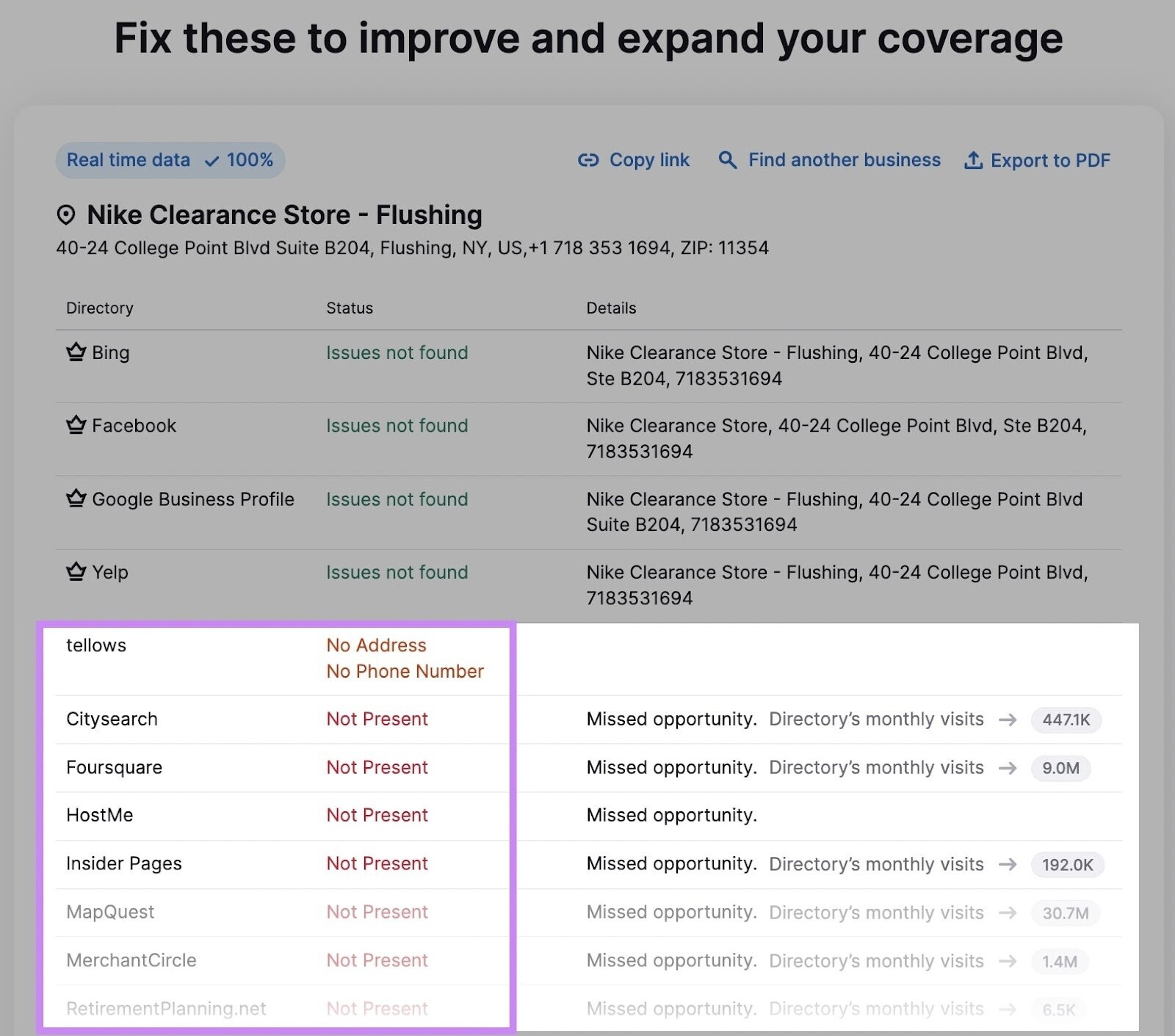
Full paid access to the Listing Management tool includes powerful features, such as automatically adding your business info to directories and review management, to help you optimize your local visibility.
33. Host Community Classes, Events, and Workshops
Build local connections and reach potential customers by participating in your community. Host free or discounted community classes or webinars to share expertise and promote your services.
Join local business groups and attend networking events and trade shows to connect with other businesses. Combine resources with other local businesses by partnering on co-hosted events.
Take part in your community. Sponsor charity events, school programs, or local sports teams by donating money or services. For example, accountants could offer free tax preparation services to low-income families.
Your support will build goodwill and improve your local brand visibility.
35. Use Direct Mail and Business Cards
Create postcards, brochures, coupons, and business cards and send them to targeted local audiences. Direct mail advertising is an effective and inexpensive marketing idea for small business owners.
For added marketing value, include a promotional code, QR code, or email address people can use to contact your business. This will give you an estimate of how many people engage with your ads.
Many local publications and media offer mail-out advertising services at competitive prices.
Source link : Semrush.com
